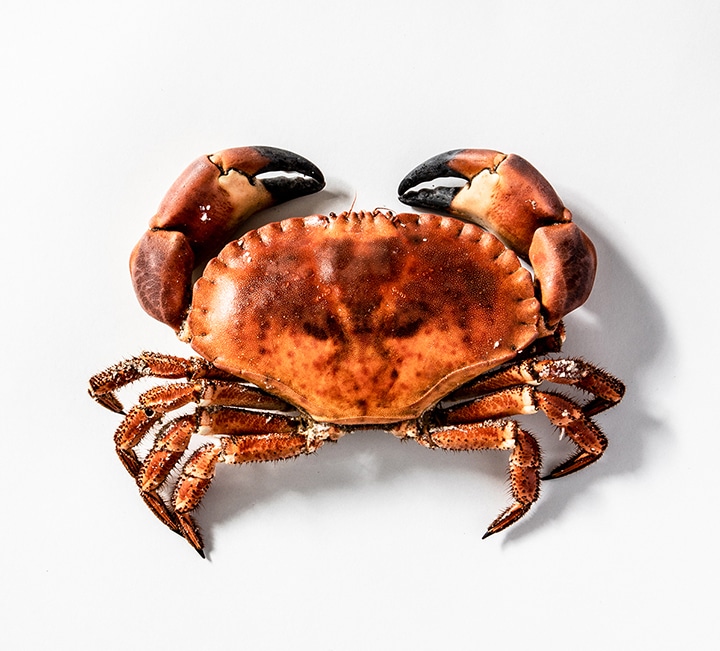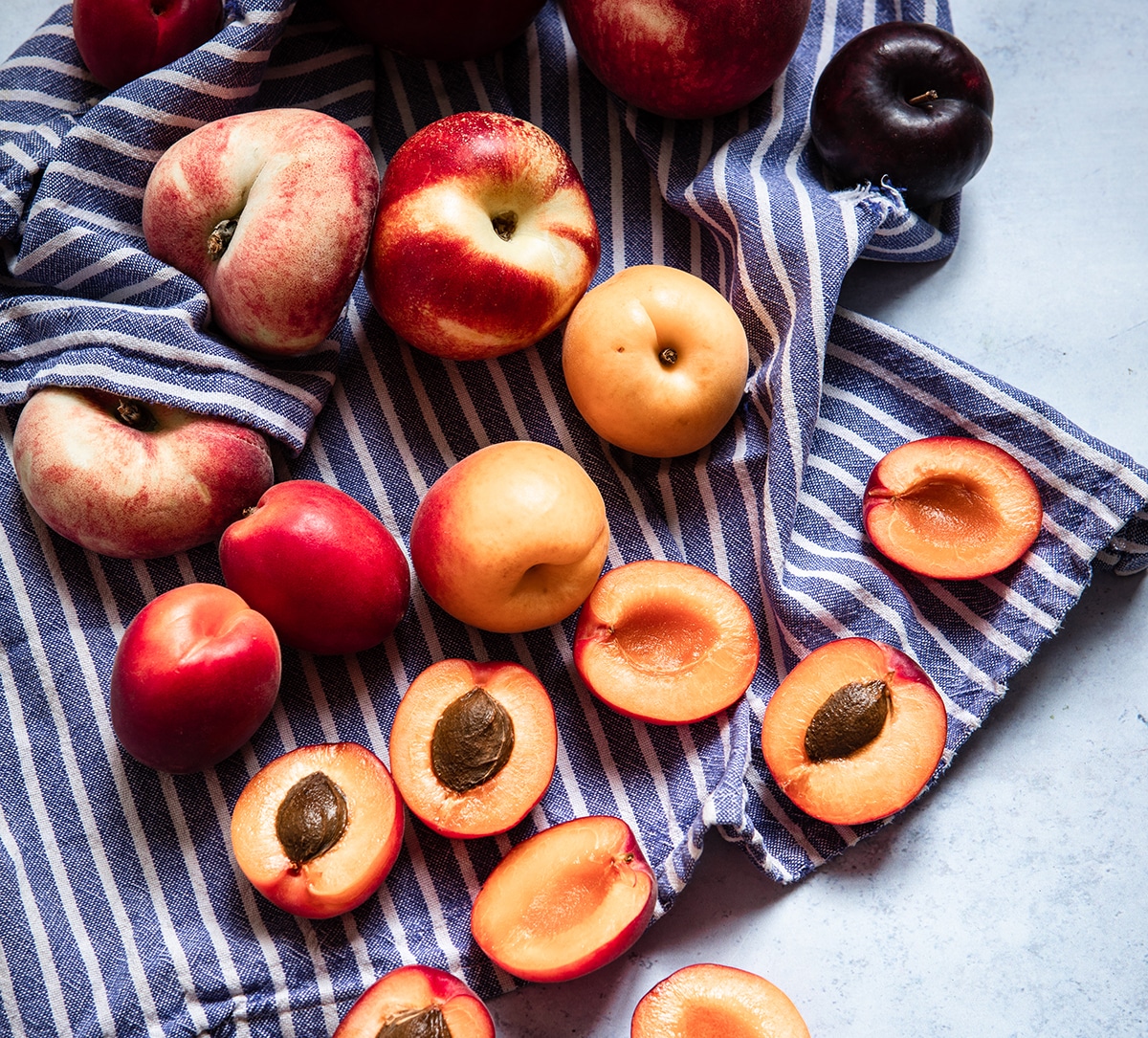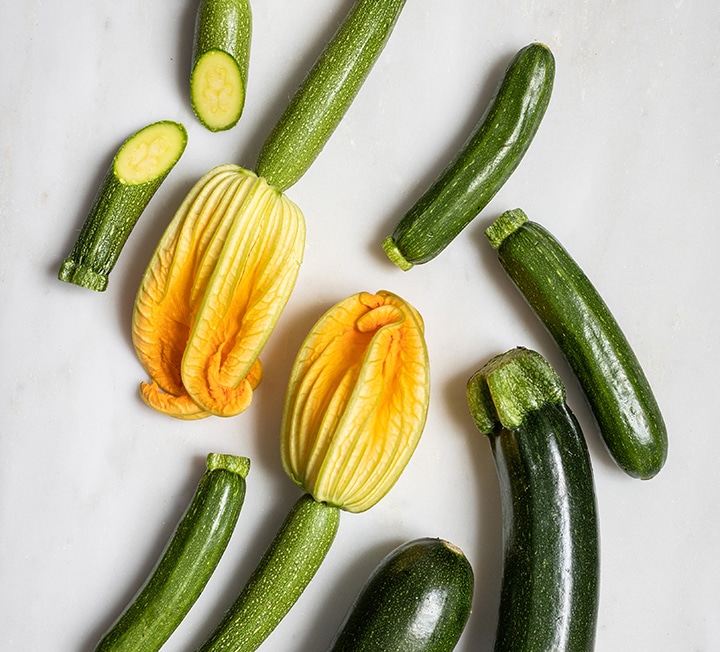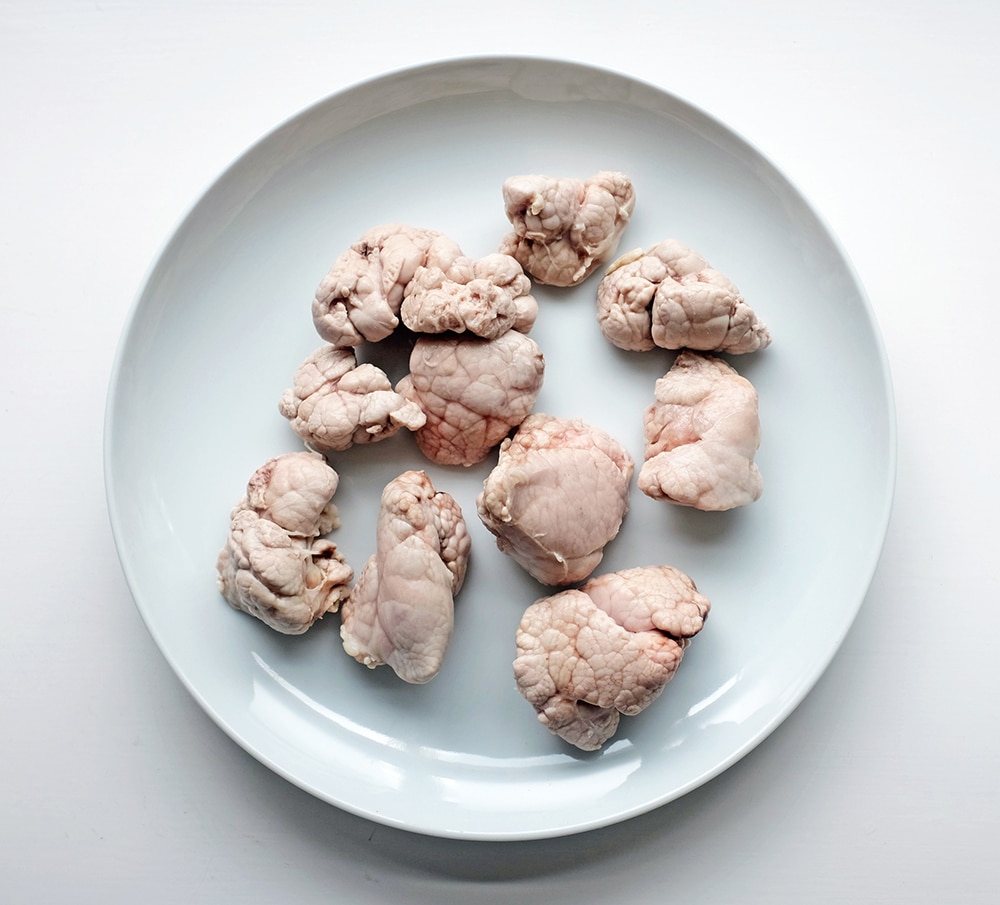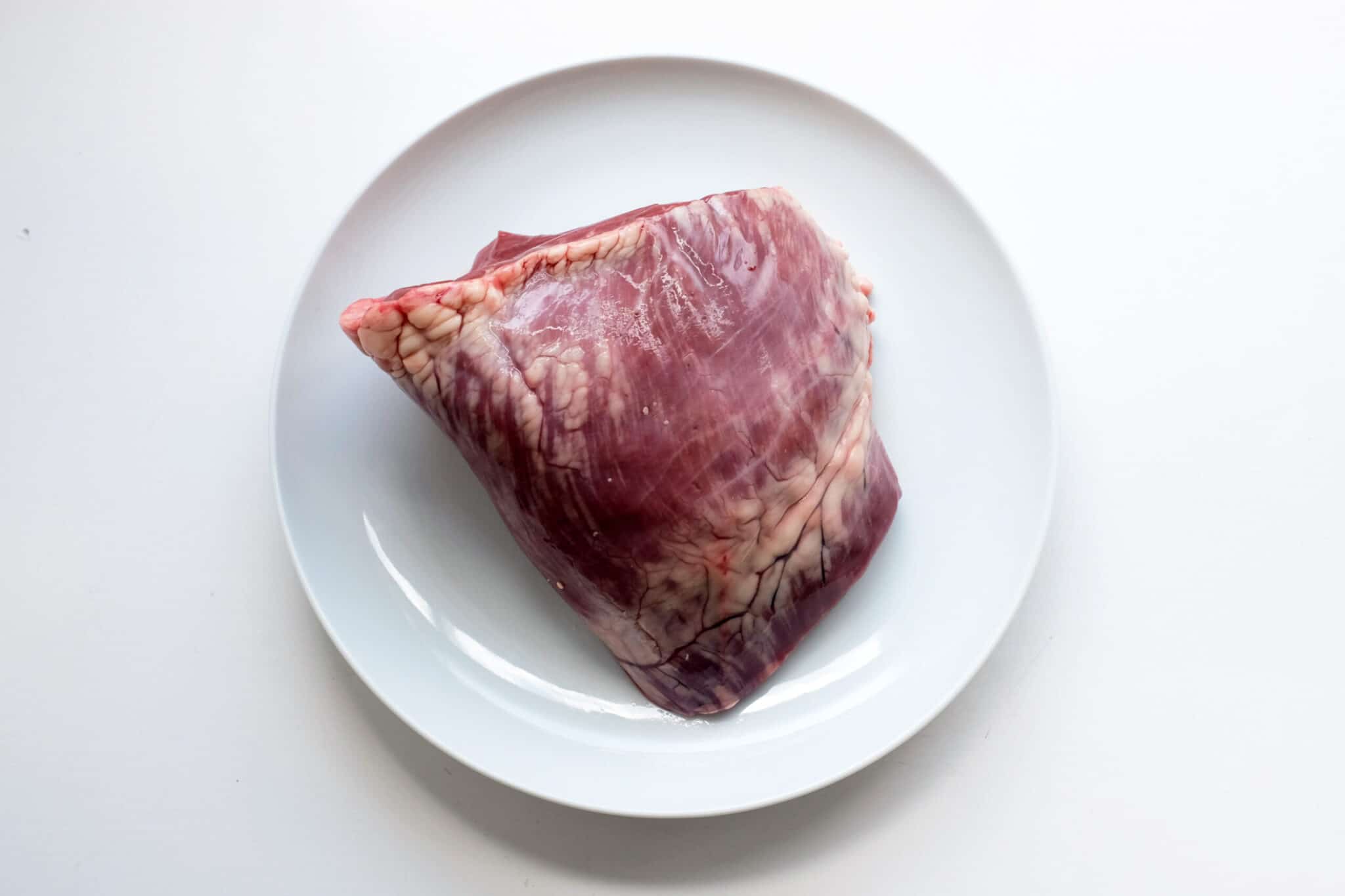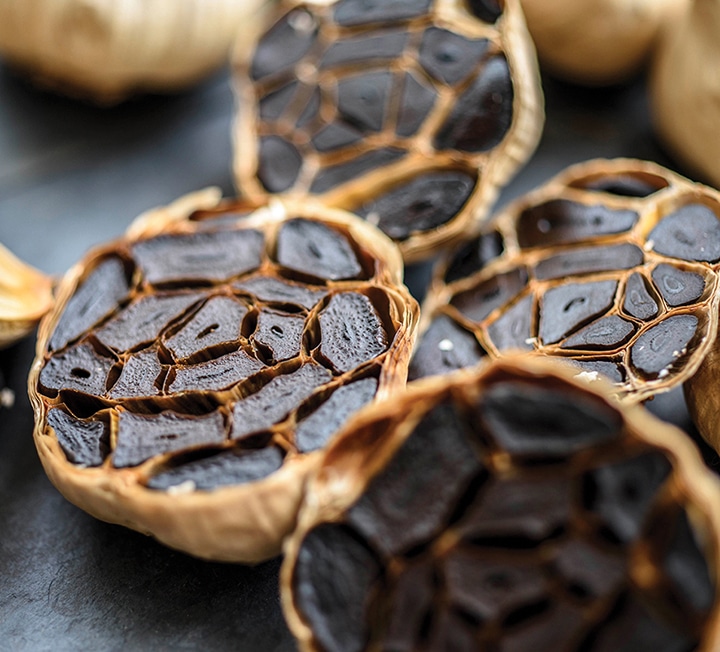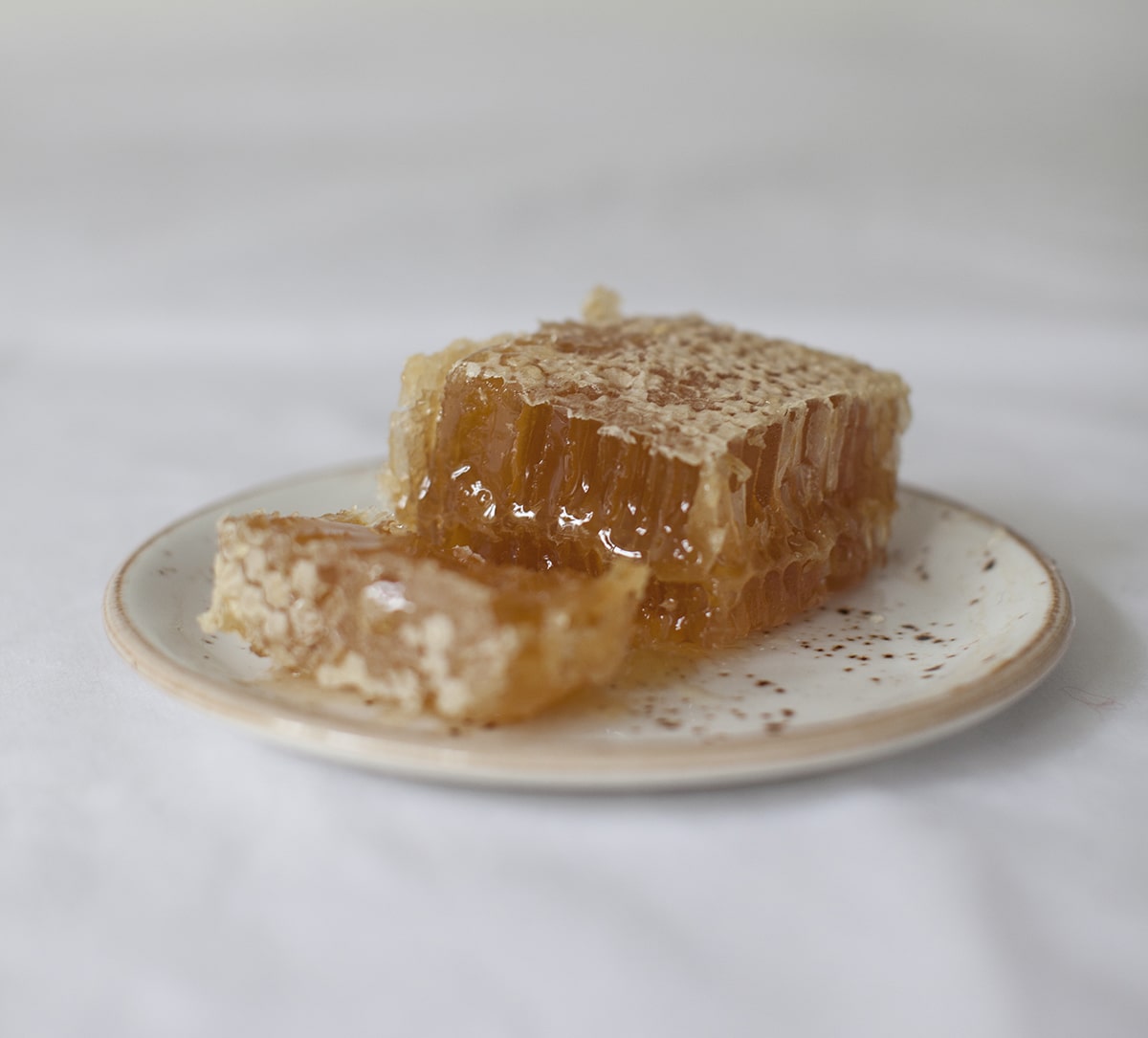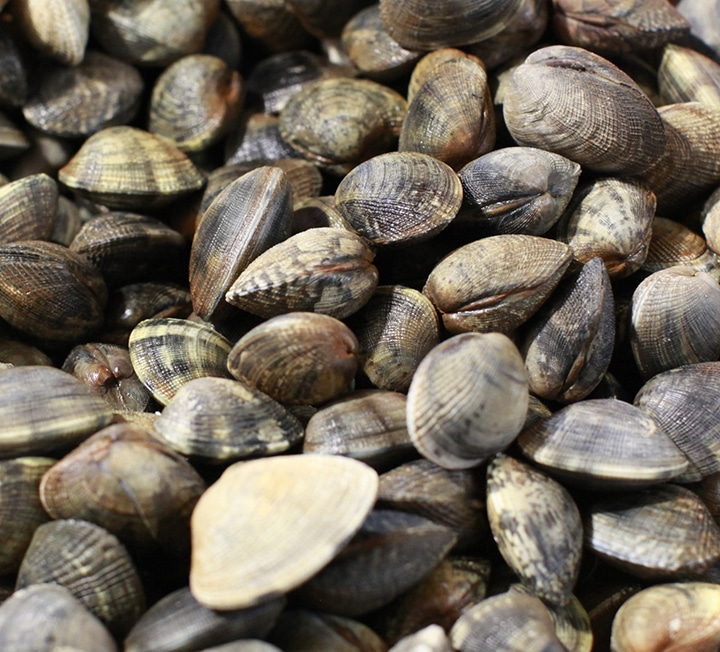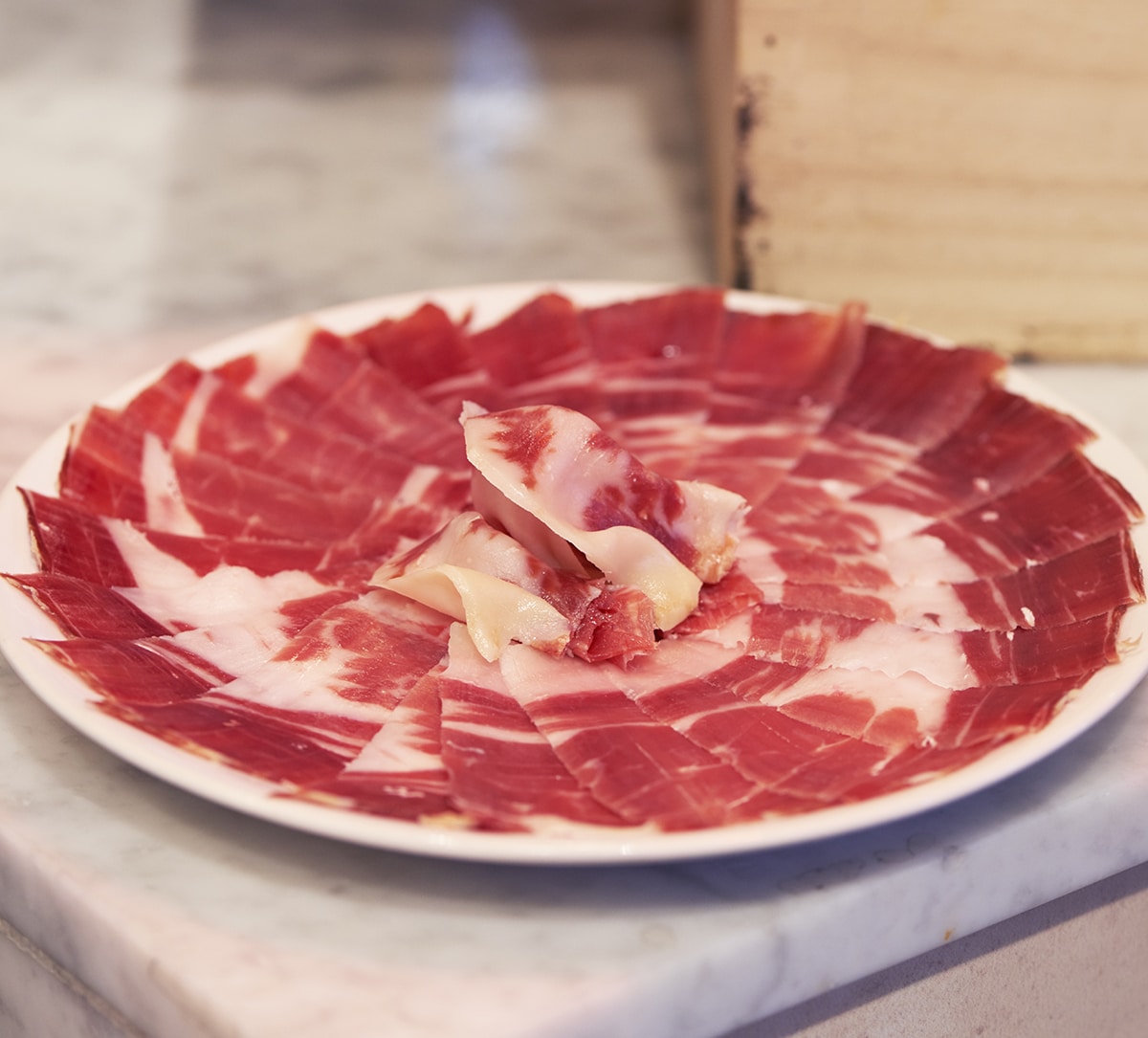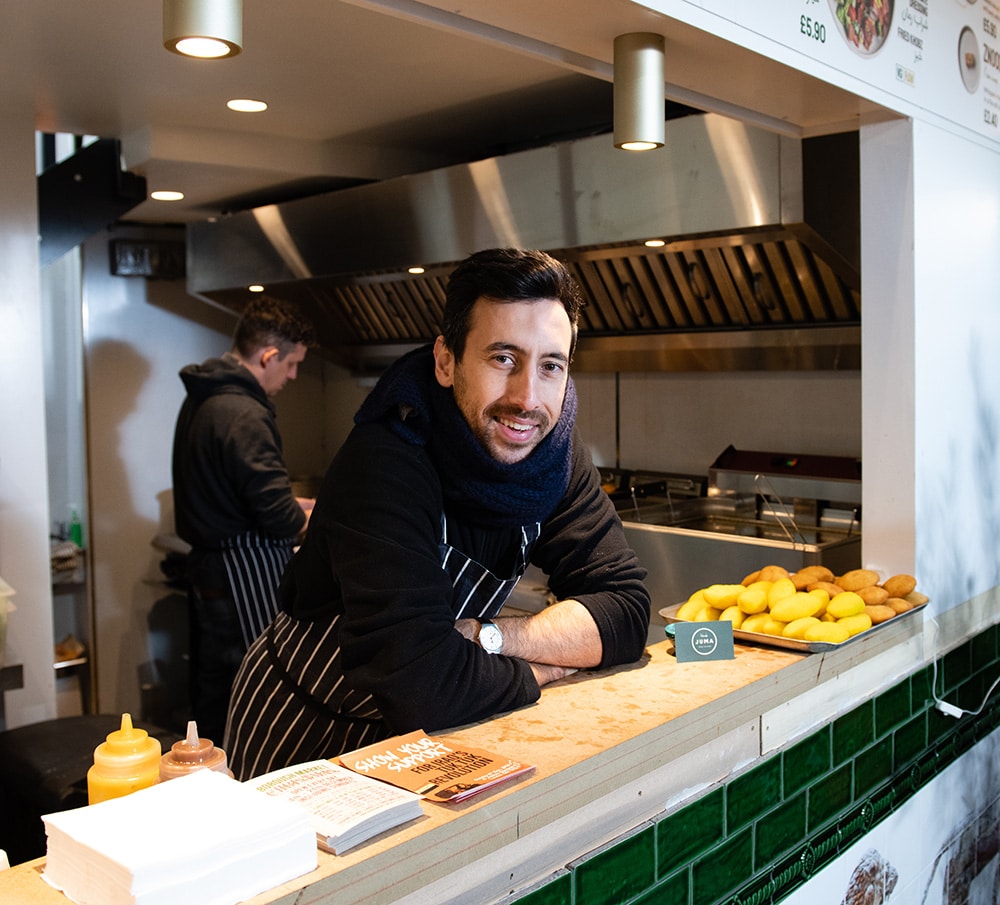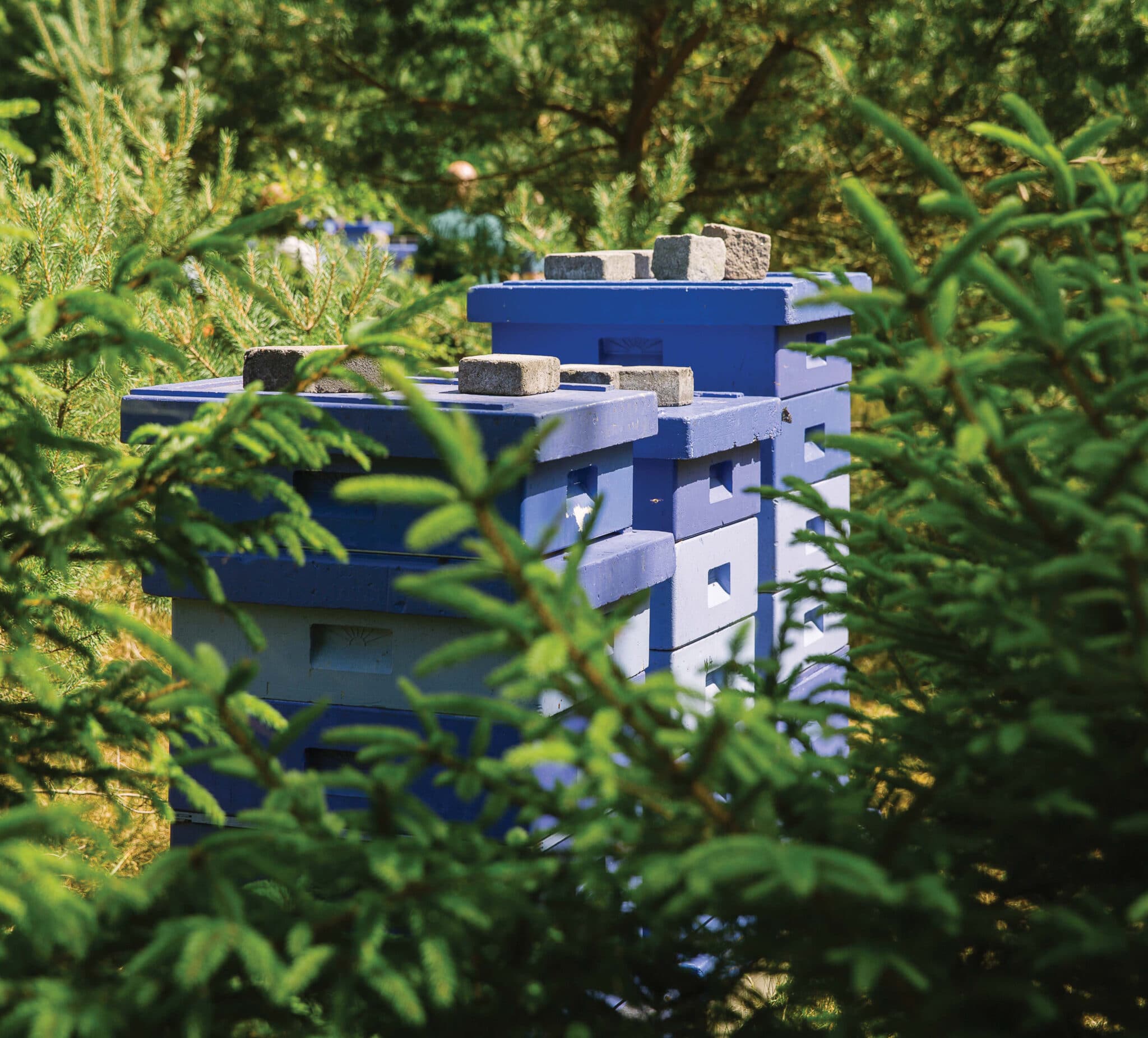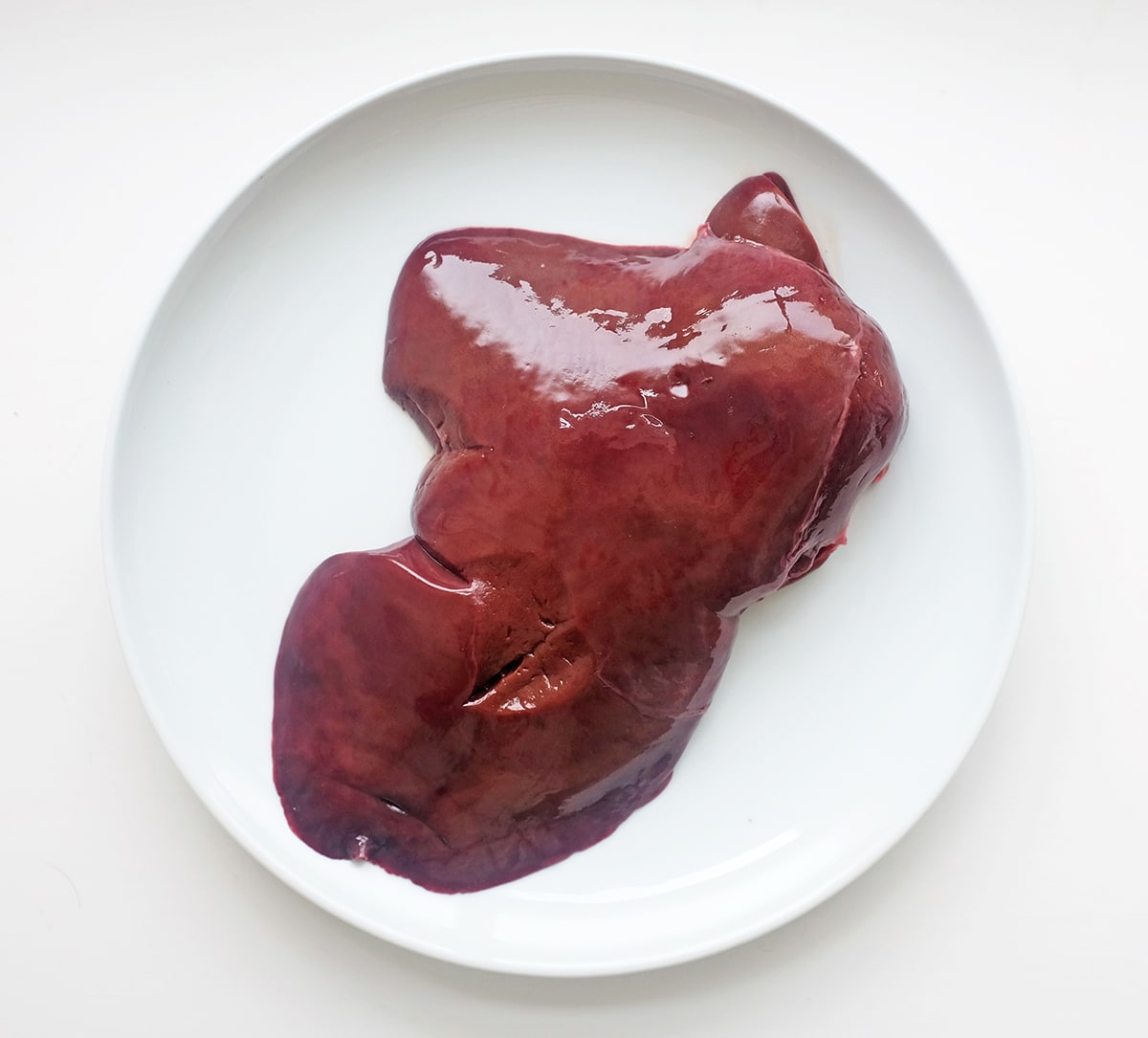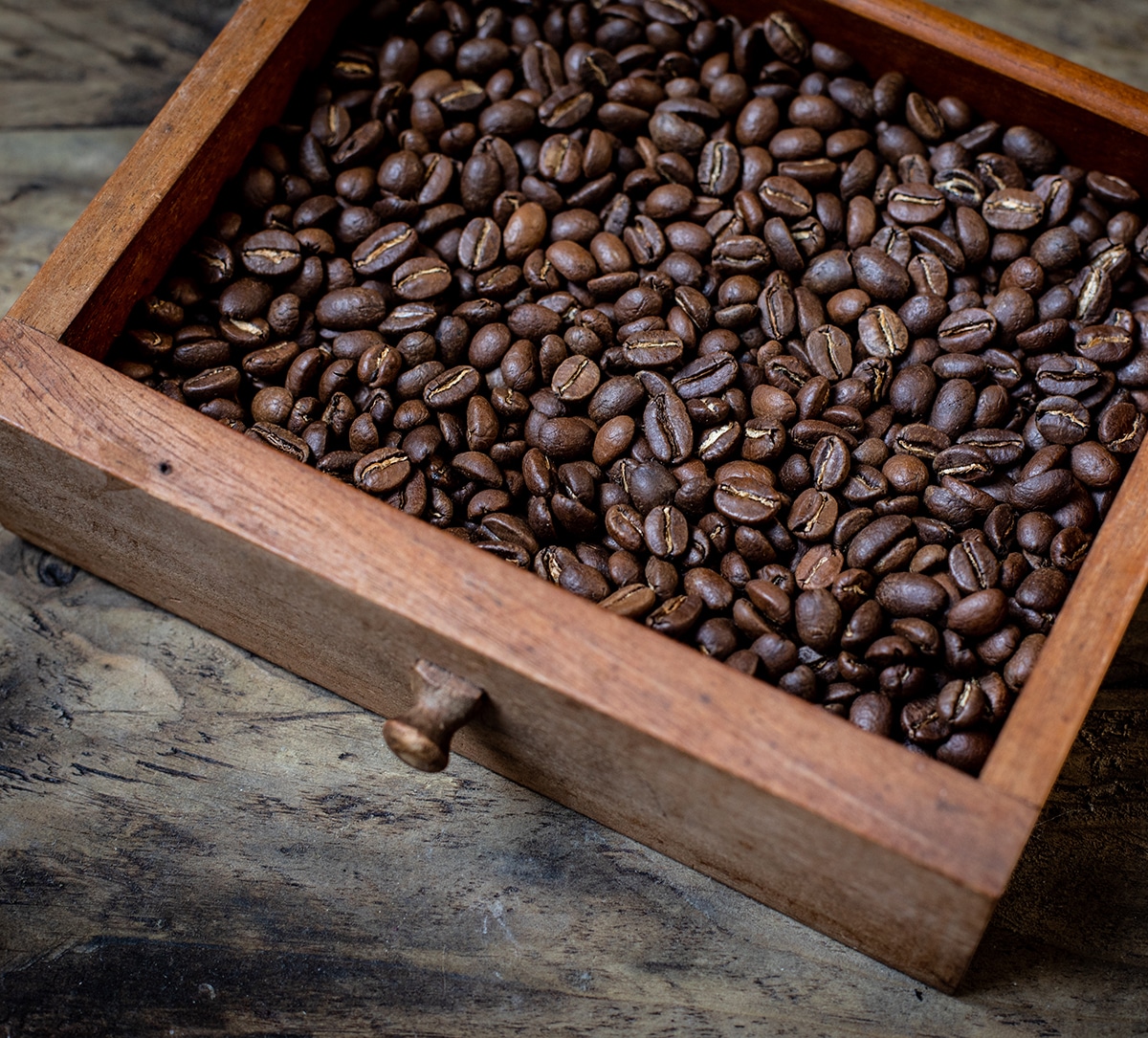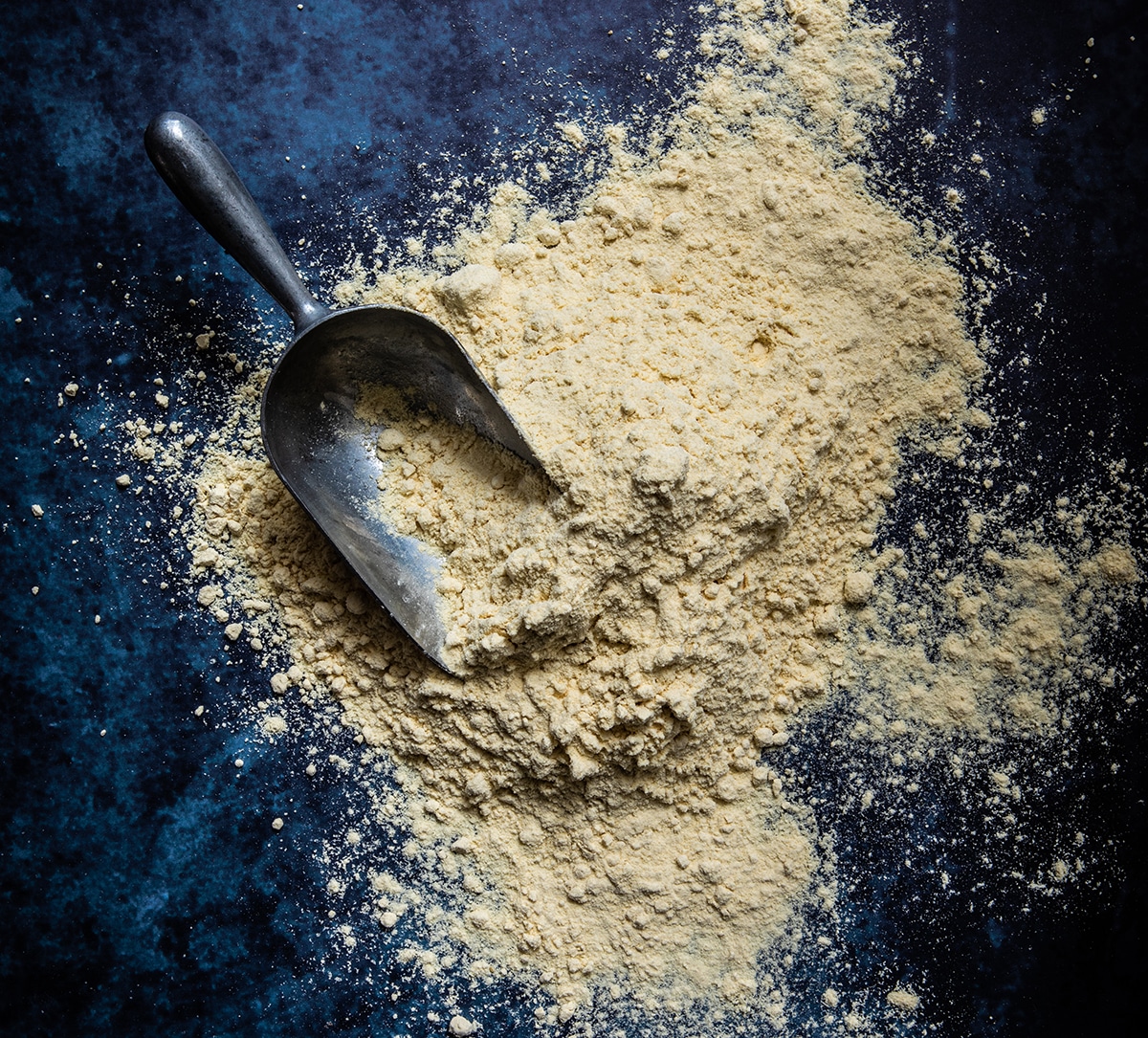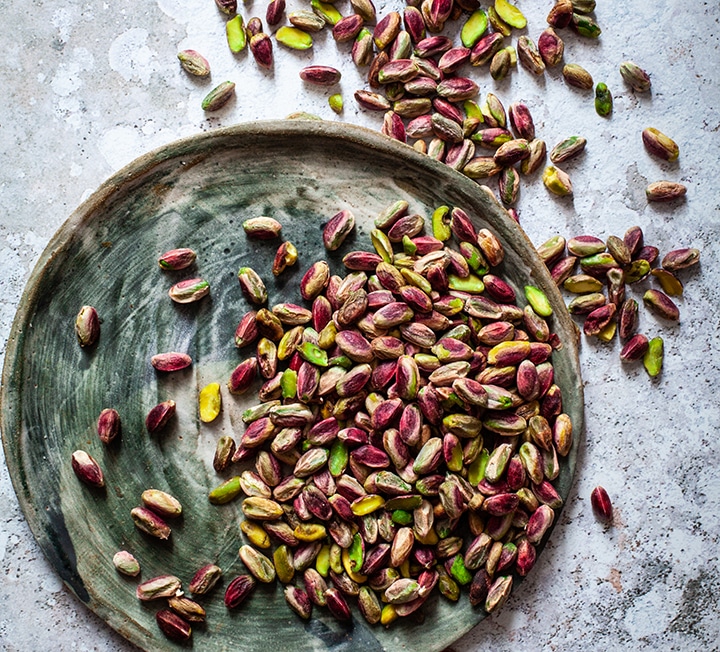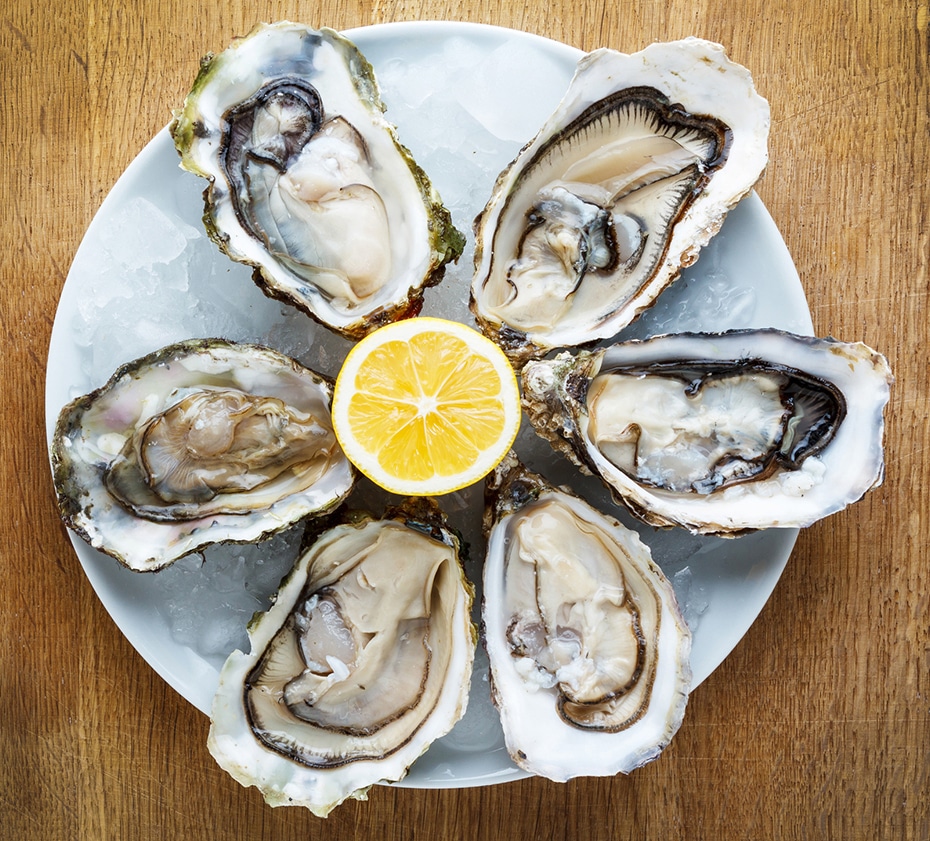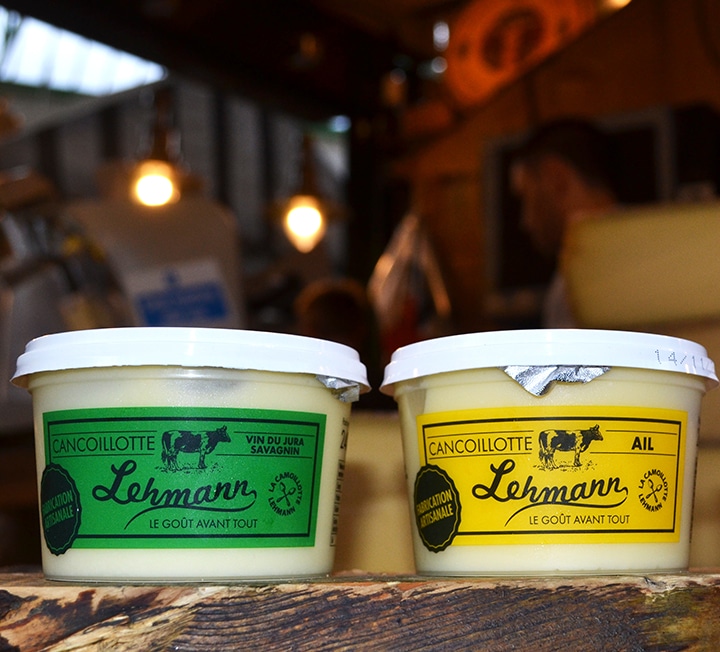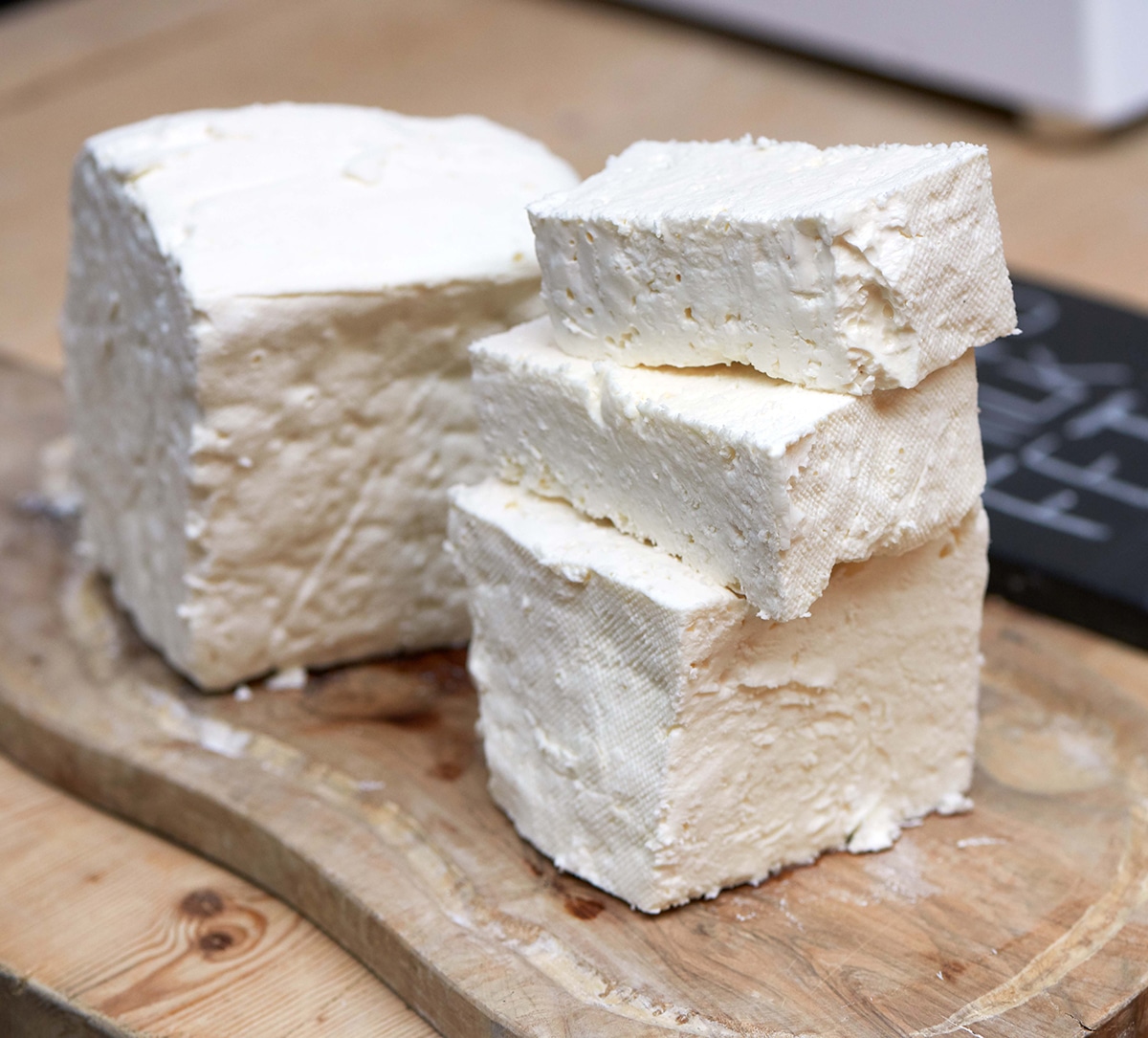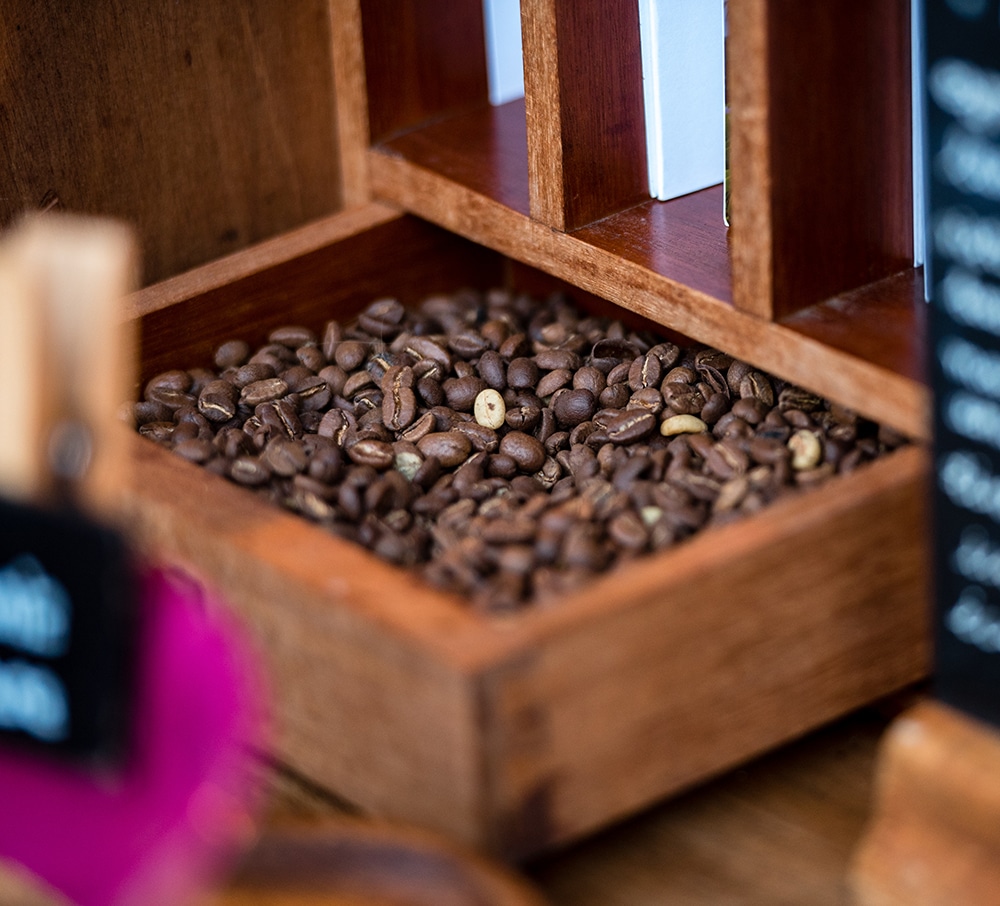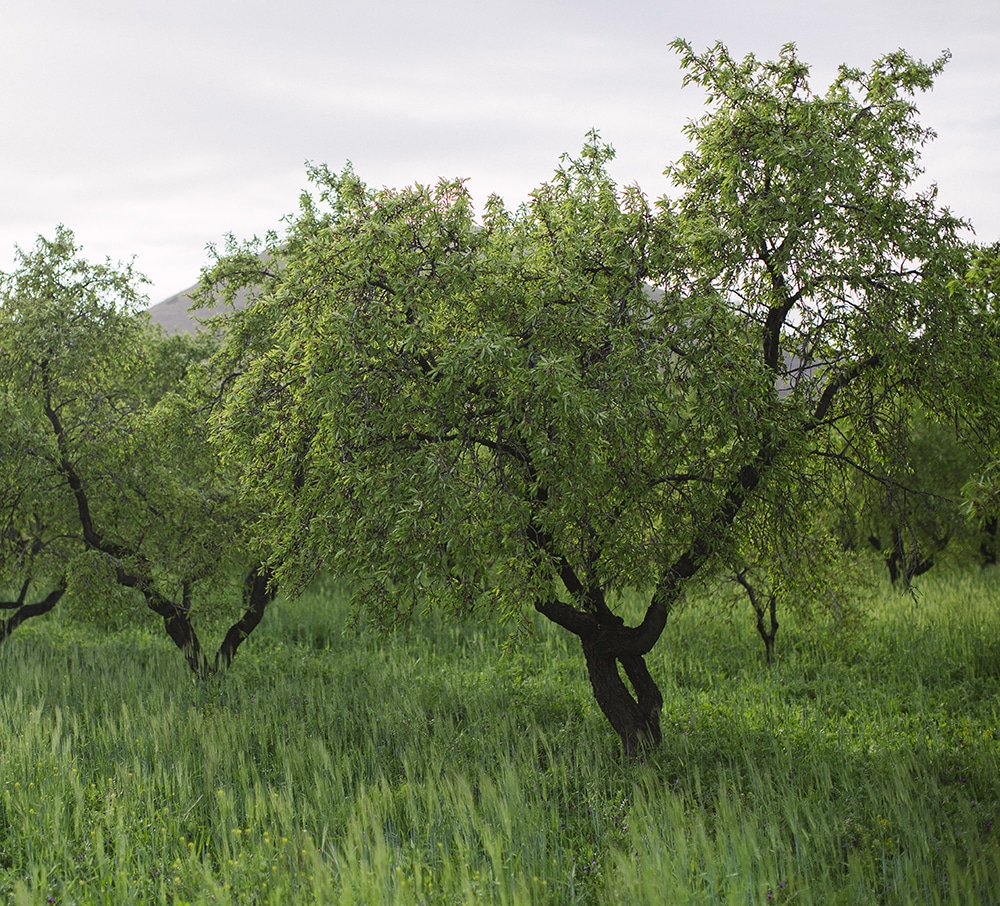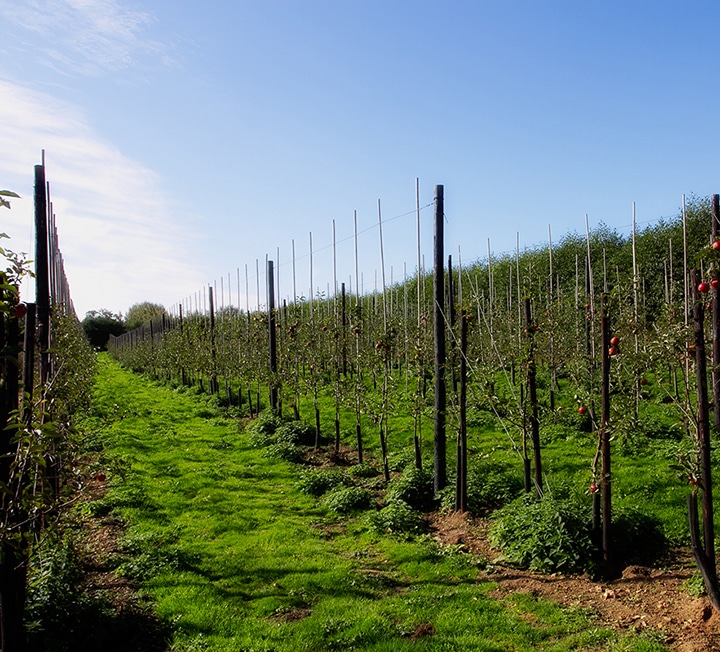Currant affairs
Sybil Kapoor explores the many joys of the glorious summer explosion of British berries and currants
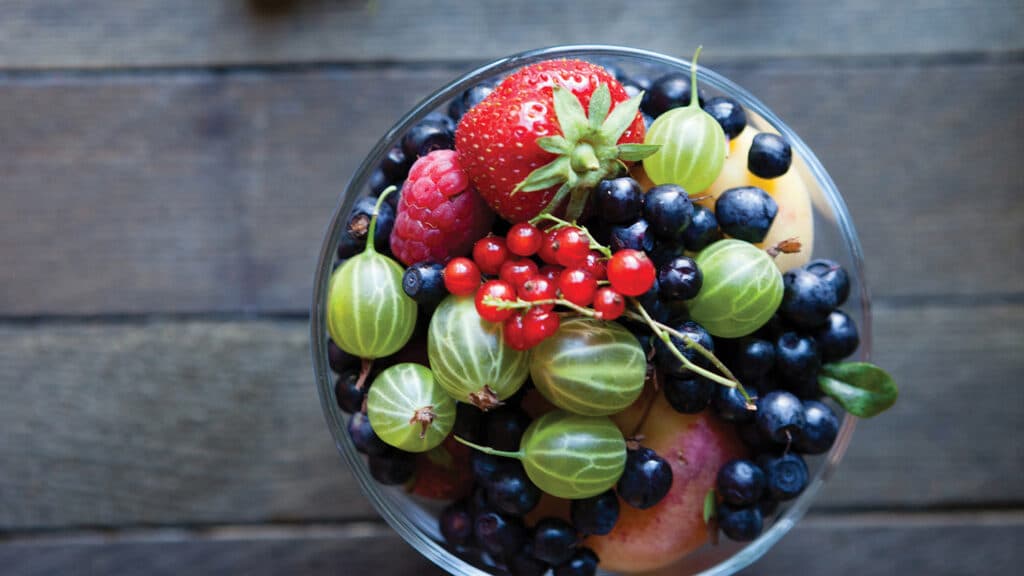

“OUR LONG SUMMER DAYS NURTURE A CORNUCOPIA OF INTENSELY-FLAVOURED BERRIES AND CURRANTS”
France may have superb peaches, Turkey luscious figs and India exquisite mangoes, but Britain has the most delicious summer berries imaginable. For six blissfully long months, our gentle weather and long summer days nurture a cornucopia of intensely-flavoured berries and currants, from fragrant strawberries and raspberries to tart gooseberries and blackcurrants. Their pure sweet-sour taste needs nothing more than sugar, cream and the occasional foil of buttery pastry, sponge or white bread to taste wonderful.
The British soft fruit season traditionally starts with strawberries. Just as every builder strips off his shirt at the first sight of sunshine, so every Briton feels compelled to eat the first strawberries with lots of sugar and cream. Only after being suitably satiated – it usually takes several weeks of strawberry gluttony – do cooks begin to use strawberries in different ways, turning them into fools, ice creams, sorbets, fruit salads, cobblers, pies and, of course, jam. And it is at this moment that the true magic inherent to all summer fruits is revealed – they take on an irresistible, deep flavour when exposed to gentle heat.
Happily, this realisation coincides with the arrival of other soft berries and is usually initially manifested in that classic 18th century dish ‘hydropathic pudding’, now better known as summer pudding, with bread used to replace the original rich suet pastry, which was far less effective at containing all those lovely, colourful juices.
The concept of gently heating a mixture of currants, strawberries, raspberries and blueberries with sugar can be easily transferred to serving them warm with pancakes, waffles and pain perdu. They also taste good cooked with other fruits, such as peaches with redcurrants or blueberries, rhubarb with strawberries, or apples with raspberries, especially when baked with a scone or sponge topping.
The stronger-tasting fruits such as gooseberries, blackcurrants and raspberries make incredible ice creams, fools, jellies (both the pudding and the preserve), tarts, curds (as in lemon curd) and jams. Blackcurrants taste particularly good when flavoured with rosemary, raspberries with distilled orange flower water, and gooseberries are delicious with elderflowers or elderflower liqueur. I for one cannot resist a blackcurrant curd meringue pie or a gooseberry curd sponge cake, never mind a wobbly raspberry jelly or a crisp, buttery gooseberry tart.
All soft fruits have an affinity with homemade custard. If you have the time, create islands of poached meringues (oeufs à la neige), floating in a sea of custard, and serve with a scattering of raspberries or redcurrants. Alternatively, make a summer trifle – where you pool custard in each serving bowl, then scatter with a mixture of summer berries, and top with a small pile of sponge diamonds and a blob of syllabub.
As the summer progresses, so the compulsion to preserve will grow. Everyone loves homemade jam. Naturally, there are jellies to make too, as well as pickled gooseberries and blackcurrant or gooseberry cordials. It’s also worth making the English version of shrub – a refreshing drink where a sweet fruit-flavoured vinegar is served iced and diluted with soda. All soft fruits make good shrubs.
But perhaps the greatest pleasure lies in simply mixing different combinations of soft berries with sugar, maybe with the slightest dash of kirsch, and eating them just as they are for pudding. They always taste heavenly.
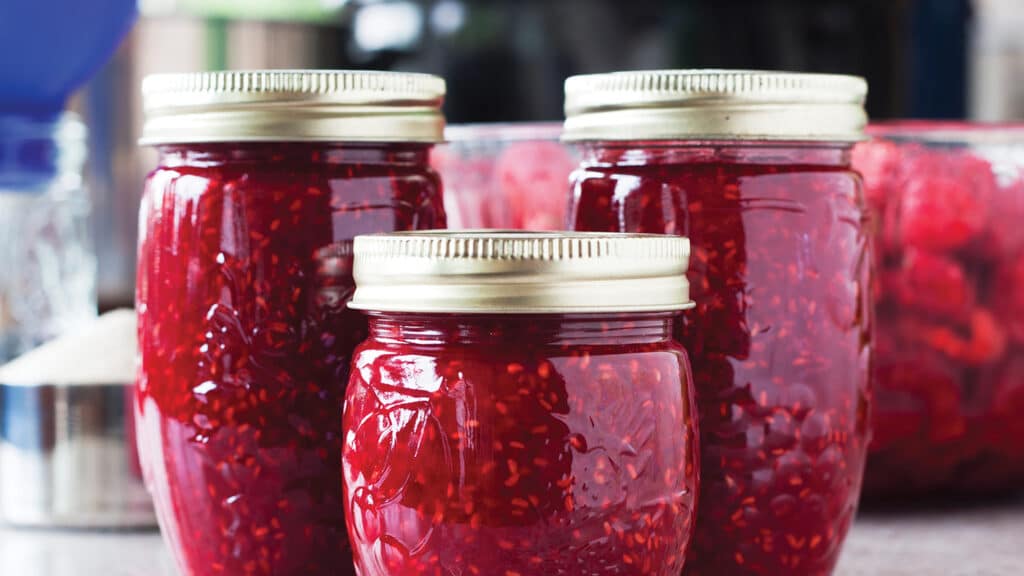
Strawberries
Strawberry fashions come and go, but London chefs currently love the sweet, soft-textured scarlet berries of early fruiting garigette (from late April), and the gorgeously perfumed woodland strawberry mara des bois that appears from late May onwards. Two quirky strawberry strains are the strasberry and the pineberry. The former has small, dimpled fruits that resemble a raspberry and the latter has tart, supposedly pineapple-flavoured, small white fruits with red seeds.
Gooseberries
There was a time when gooseberries were categorised by their size, colour and hairiness – coming in shades of green, yellow, white and red, both large and small, smooth and hairy. Today, gooseberries are rather hard to find, so should be bought whenever spotted.
Tart culinary gooseberries usually appear just as the elderflowers finish towards the end of May or beginning of June, followed in July by their sweeter, muscat-flavoured dessert cousins. The latter need no cooking, only washing, topping and tailing. Both are utterly delicious. The former freeze well, both raw and cooked.
Raspberries
Traditionally the British raspberry season started in July, but these days they’re grown undercover and so fruit from June to October. Tulameen, with its perfectly balanced ratio of sweetness to acidity, remains a popular summer variety, with autumn bliss taking its place in the later months. Look out for white, yellow and black raspberry varieties, all once treasured for their subtle flavours.
Red, white and pink currants
These jewel-like strings of currants fruit in Britain in June and July and have a much more intense, sweet-sour taste compared to their imported cousins, which are available for much of the year. They add a delicate acidity to other fruits, both raw in fruit salads and cooked in pies and preserves.
Blackcurrants
Depending on the weather, blackcurrants come into season in July for four to six weeks. Always choose plump, undamaged fruits and wash thoroughly before stripping from their stalks. They freeze well and have a fantastically rich port-like taste once heated with sugar. They make superb ice creams, syrups, jams, sorbets, fools and summer puddings.
Blueberries
Families once gathered the bilberries (also known as blueberries or whortleberries) that grew wild on the acidic heaths and moors of Britain for intense-tasting August pies, tarts and jams. Today, we buy the milder cultivated blueberries adopted from America. The English crop will fruit in August and September, before being replaced by foreign imports for the rest of the year.
Blackberries
There are more than 400 micro-species of blackberry growing wild in Britain, which can fruit from August until November. Their fruits are smaller than those of domesticated blackberry varieties, with myriad different flavours and tastes. Domesticated berries have large juicy fruit, but a tendency towards sourness that requires a generous sprinkling of sugar. They are at their best in August and September.
Discover more
Currant affairs
Sybil Kapoor explores the many joys of the glorious summer explosion of British berries and currants


“HANNIBAL LECTOR’S IMMORTAL LINE MAY HAVE CONTRIBUTED TO MANY PEOPLE’S RELUCTANCE TO TASTE THIS MEAT”
Many cuts of meat qualify as offal, but I suspect our tastebuds and desire for offal in general have been tarnished by the over-cooking of two specific cuts: kidneys and liver. Hannibal Lector’s immortal line, “I ate his liver with some fava beans and a nice chianti… ffffffffffffffssttsttt”, may also have contributed, even if only subconsciously, to many people’s reluctance to taste this meat. At the very least it highlights the visceral nature of the organ, maybe even humanises the organ of other animals too.
Yet not everyone is repulsed by the idea of eating liver, and I may as well let you know from the very beginning of the piece, that I think you should give it another try.
What does liver taste like?
The liver does three things: it cleans toxins from blood; it produces bile; and it stores sugar (as glycogen). It should be no surprise, given this organ deals in blood, that the overriding and often negatively associated taste people are left with is ‘metallic’; the ferrous nature of the red stuff is well known. The fact liver also produces bile, however, can perhaps also help to explain the slightly bitter aftertaste of this type of meat.
But its role as a store of sugar might also help to explain why, actually, liver ain’t so bad after all. A hint of sweetness rounds things out and ensures weirdos like me keep coming back for more. There’s a richness to liver, which explains some of its appeal. It shines alongside soft, buttery, mashed potato and paired with onion gravy, or next to a sharply dressed bitter leaf salad, where there’s plenty of acidity to cut through the meat.
Texture-wise, when cooked right, liver is smooth, silky and cuts almost like butter. There’s little or no gristle, fat or bone impeding an easy bite through, though because it’s very lean, it’s important to cook it medium rare, lest you be left with a tough old leather boot.
How does the flavour differ between animals?
Every animal has a liver, and while the generalisations above ring true to all of them, there are some subtle differences in taste and toughness.
Two of the most prized livers are calf’s liver and chicken livers. Both are on the sweeter end of the offal spectrum, mild in their meatiness and relatively tender and delicate, though for obvious reasons, chicken livers are much, much smaller than the other meats mentioned here. As well as starring in their own dishes, they are often used to enrich a ragu or stew – look to Italian and Persian cuisine for examples of this.
Beef liver is meaty, but also darker and quite a lot tougher than a calf’s liver. Lamb is mild, a little sheepy, and goat is similar – perhaps milder still and also sweet, particularly when from a kid goat.
Pig’s liver seems to be the least desired of all – it can be particularly pungent and bitter, requiring lots of hot spices to make it palatable (to westerners, at least).
Finally, of course, there’s the matter of goose and duck livers in the form of foie gras. Through force-feeding, these livers become bloated and extremely rich. Personally, I’m not a fan; though that’s more for matters of taste than ethical reasons.
Cooking options
In my experience, there are three ways to cook and eat liver:
— Slice into 3-4cm steaks, then cook to medium-rare on a dry heat, ideally achieving a crust on the outside while keeping things soft and blushing pink within.
— Brown rapidly (but keep rare), then blitz or mix into a pate or terrine, allowing residual heat, or the gentle heat of a secondary cooking stage to finish the job.
— Cut into small pieces and include with other meats in something like a faggot or sausage.
Whichever way it’s cooked, it’s pretty essential to ensure liver is not ‘well done’, as by then, any textural enjoyment is long gone, and the iron and bitter tastes are exaggerated.
You’ll sometimes read of liver being left in milk to remove bitter flavours. I only think this necessary with beef and pig. Other than that, it’s only necessary to trim a few sinews and nuggets of fat from the surface.
Classic western dishes tend to match liver with onion or pepper-heavy sauces, perhaps with a cream or fortified wine base. From the east, the power of a pig liver is often masked by Sichuan peppercorns or chilli. If I turn to my recipe books for specific ideas, though, I spy a number of eye-opening ideas to try:
Fergus Henderson’s dried salted pig’s liver, radishes and boiled eggs in Nose to Tail Eating stands out as being particularly bonkers.
I also like the three liver recipes in Simon Hopkinson’s Roast Chicken and Other Stories, not least calf’s liver, Venetian style, which seems to be similar to most liver and onion recipes, save that the liver is exceptionally thin and barely cooked, and there’s a dash of red wine vinegar and parsley for good measure, so it’s perhaps a little lighter than the average Anglo version.
See also Hopkinson’s version of Richard Olney’s terrine of poultry livers, and his duck livers, crepes Parmentier and onion marmalade – both from the same book.
Claudia Roden has a recipe for Catalonian calf’s liver with onions and brandy in her Food of Spain (swap in chicken livers and oloroso for an Andalusian version).
David Thompson’s seminal Thai Food includes an intriguing recipe for calf’s liver, in which 5mm-thick slices are dipped in an out of gently simmering water until just cooked, and then dressed with lime juice, fish sauce, and a variety of fresh herbs. This is based on a classic Thai grilled pork liver dish (dap warn), which he doesn’t seem to like very much.
You must try Itamar Srulovich and Sarit Packer’s chopped (chicken) liver in their Honey & Co cookbook. This is a dish typical of Jewish cuisine, which is rich and sweet and milky and so much better than it looks and sounds – particularly if you’ve soft bread to scoop it up with.
And, I’m mighty keen on Olia Hercules’ chicken liver, buckwheat and crispy shallots in Mamushka. Not to mention Ukrainian enriched buns stuffed with chicken hearts and liver, flashed in madeira.
Currant affairs
Sybil Kapoor explores the many joys of the glorious summer explosion of British berries and currants


“THE LEGS OF OUTDOOR REARED, FREE-RANGE PIGS ARE SALTED, DRIED AND MATURED FOR A TOTAL OF THREE YEARS”
Ibérico de cebo de campo
Produced by Castro y Gonzalez, the century-old family firm that supplies Brindisa, the legs of outdoor reared, free-range pigs are salted, dried and matured for a total of three years in curing rooms in Guijuelo – the most northerly Ibérico ham-producing region – resulting in a full, rich aroma and balanced sweet and savoury notes that linger on the palate. Eat with pan con tomate and a glass of rioja crianza.
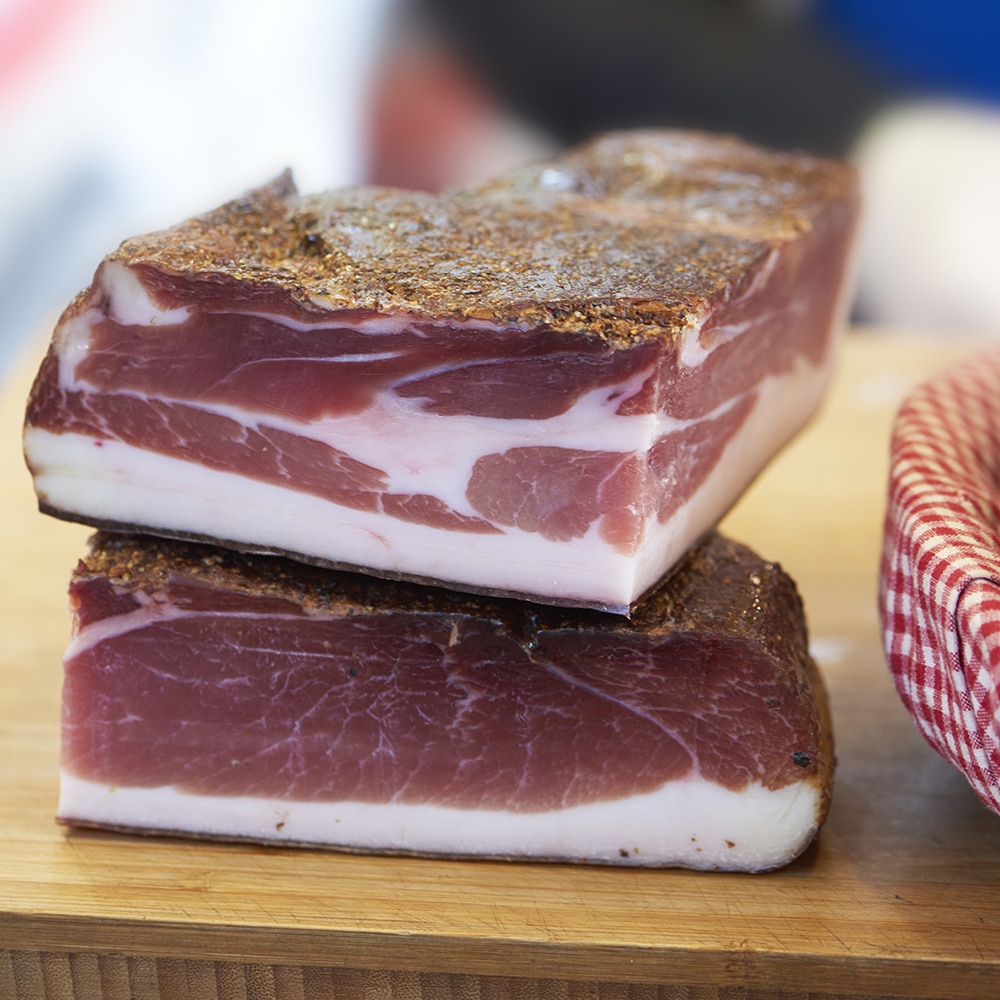
Speck alto adige PGI
Seasoned with juniper berries, rosemary and bay leaves, this speck embodies the South Tyrol region – and the fare available at Alpine Deli. Unlike most hams, the curing process takes place once the meat has been taken off the bone. Having been marinated for three weeks in cool rooms, the ham is cold smoked over beech wood and dried in the fresh mountain air. Not too salty, with a rounded, smoky flavour.
Mountain cured ham
In a move that’s good for both planet and palate, PGI pigs from the Franche-Comte region are fed on whey left over from the production of the region’s famed cheese, imbuing their meat with rich flavour and contributing to its silken texture. Cured with coriander, pepper and bay leaves, then left to dry for 10 months, this sweetly salty ham from The French Comte pairs perfectly with a fruity riesling.
Prosciutto di Cormons
The D’Osvaldo family of curers have near-mythic status in the Friuli Venezia Giulia region of Italy. The meat is salted and massaged by hand, then pressed and – unusually for prosciutto – smoked with logs of cherry and laurel. During ageing, which takes 16 to 24 months, the legs undergo various ‘larding’ procedures, ensuring a supple finish. Buy it by the expertly-cut slice at The Parma Ham and Mozzarella Stand.
Ham
Simple of name, but no less spectacular for that, Ginger Pig ham is ‘wet cured’, meaning it’s submerged in a brine bath for just over a week, allowing the cure to penetrate to the bone. This draws moisture out, drying the meat before it’s gently simmered in water until cooked. This is ham that needs nothing but a couple of slices of pillowy bloomer, good butter and a dab of proper mustard.
Currant affairs
Sybil Kapoor explores the many joys of the glorious summer explosion of British berries and currants


“ARBEQUINA OLIVES ARE SMOKED OVER HOLM OAK WOOD IN A PROCESS THAT TAKES 15 DAYS TO COMPLETE”
Smoked olive oil
Produced on the Netasa family farm in La Vera, Extremadura, Finca La Barca smoked olive oil is made with the oil of arbequina olives that have been smoked over holm oak wood – using the same method applied to La Vera’s prized paprika – in a process that takes 15 days to complete. Each bottle is numbered and sealed with wax. Available from Brindisa, it is a creamy and delicate finishing oil with a subtle smokiness.
Lemongrass and tarragon oil
This special olive oil from Oliveology is made with a blend of three olive varieties, grown and harvested by hand on an organic farm in Sparta, Greece. The olives are cold pressed with the lemongrass and tarragon at 22C to ensure that maximum flavour is imparted. Use the oil to lift scallops, grilled fish or seasonal Mediterranean vegetable dishes.
White truffle oil
Made with extra virgin olive oil from Puglia, south Italy, mixed with white truffle essence and bottled on site at Tartufaia, this is the most pungent and popular of the stall’s truffle oils. Owner, chef and truffle expert Mario Prati suggests adding a tablespoon to mayo, mustard or pesto, or stirring a few drops into mash, risotto or pasta. Don’t cook with it, though – it’ll lose all those lovely flavour notes.
Basil olive oil
Danilo Manca’s family has been producing fine olive oils in southern Italy for generations. For this particular nectar from The Olive Oil Co, he harvests coratina and ogliarola olives in the autumn. The oil is then infused with his homegrown basil come March. An aromatic oil with a distinct peppery note to the finish, it’s best enjoyed on its own rather than in a vinaigrette to get the full punch of flavour.
Garlic rapeseed oil
Noel Fitzjohn at Fitz Fine Foods takes cold-pressed organic rapeseed oil, gently heats it with garlic and leaves it to marry for about a month. It’s brilliant for cooking, given the oil’s high smoke point (try rubbing it on chicken before roasting or frying), but works just as well in dressings: Noel likes his with French mustard and balsamic vinegar, poured over a salad of mozzarella, cherry tomato, basil and spring onion.
Currant affairs
Sybil Kapoor explores the many joys of the glorious summer explosion of British berries and currants


“THE FEELING OF SOMEONE HAVING MADE SOMETHING FOR YOU, THAT CONNECTION VIA FOOD – THAT IS TRULY LASTING”
It was in a group discussion with his fellow psychotherapy students that Stefan realised the full extent of bread’s power to connect people. “We’d been asked to bring in something symbolic – and I was a bit stuck, to be honest with you. But I’ve been working here for a long time, so bread is fairly meaningful to me.”
Stefan has sold bread at Borough Market for more than a decade – first at Bread Ahead, then Olivier’s Bakery, where he has been working while studying part-time at a local university. He’s loved the course – “It’s the most beautiful thing I’ve ever done” – and he’s loved seeing the theory play out in his work at the Market. “I’m not analysing people,” he laughs, “but everyone, from all walks of life, buys bread and I have a lot of rapid-fire interactions with people. I’ve become much better at reading emotions.”
The group discussion took place on an away weekend, and Stefan had taken one of those huge sourdough loaves you find at Olivier’s. With no knife readily available, Stefan had broken it into hunks and passed them around. “I actually don’t think it would have been the same had I been able to cut it into neat slices. At the end of a very long weekend of exploring our psyche it became a focal point – something really special and ritualistic.” Everyone there understood that this experience – breaking and sharing bread – was about far more than having something to eat.
Stefan’s tale got me thinking. If even the act of buying and sharing bread promoted mental wellbeing, how much more so would making it? People talk a lot about the restorative, calming nature of cooking; about the connection between the creative process and what is commonly called ‘mindfulness’. Few people can have more of an idea of this than the Borough Market producers, who spend almost every waking moment making and working with food.
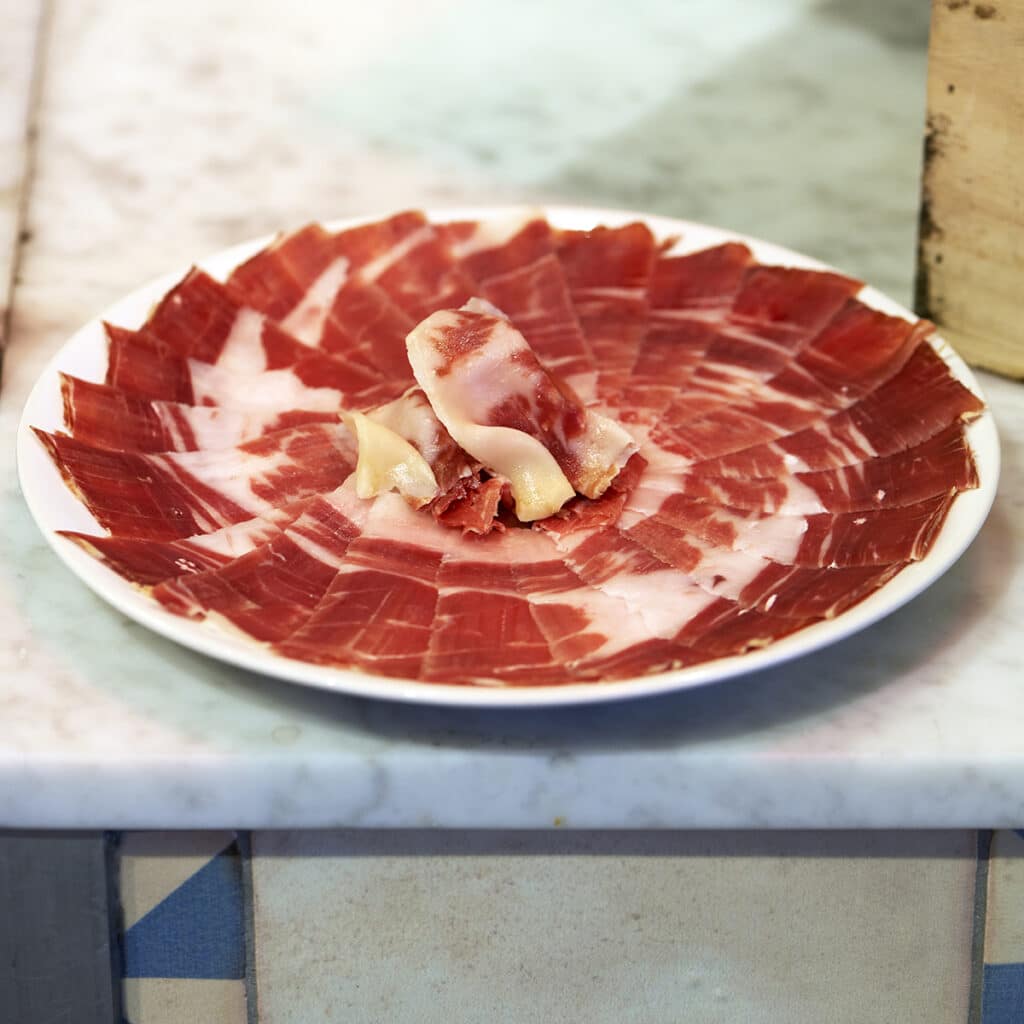
When I speak to David at Brindisa, who spends hours carving beautiful jamón, he describes the entire world disappearing the moment he has his knife in his hand. “Even when it’s noisy and busy with customers, I am zoned in on the leg of ham. It is my craft, and I want to pay respect to the pig and all the other people in this process.” After all, Dave’s is the last step in the leg’s five-year journey: the iberico pig being bred in Extremadura, cured in Salamanca and transported from there to Borough Market. It takes him three hours to carve one leg, but he doesn’t notice the time. “To call it an art sounds pretentious – but it is an art and I like to do it beautifully.”
I leave him running his knife expertly along the rich, scarlet leg, and head up the road to the Kappacasein dairy in Bermondsey. “I’ve recently been reading a book about mindfulness and meditation,” says owner Bill, when I catch him at the end of a day’s cheesemaking. “It talks a lot about being present – about engaging with where you are at the moment, rather than where you want to be in the future.”
It’s an approach that proves applicable, he continues, to making his alpine-style cheeses. “I always thought a tea ceremony was about the tea. But it’s not. It’s about the simplicity of the leaves, the hot water, the stirring, the cup, the temperature – the process. And the flavour comes from that.” Similarly, Bill continues, when he makes his Bermondsey Hard Pressed or raclette, he is not really thinking about eating cheese.
“There is a repetitive element, but to imagine it’s all repetitive ignores the complexity of something multifaceted and complicated.” To work with raw milk and a native starter culture is to be constantly alive to changes in the sight, smells and textures of the junket and curds, and respond accordingly. “When the cows are in lactation, what they were eating, who did the milking, what time I picked the milk up – all those things can vary,” says Bill. “I have to have faith in my process and in nature.”
Bill is a big fan of making (and eating) food that takes time to make. “I’ve tried to do that with cheese by making my own starter, picking the milk up fresh, and ageing it for 24 months.” In our fast, busy lives, carving out space to slow down and create has become increasingly difficult – and yet it is a key aspect of being human, says Charlotte Hastings, a BACP-accredited psychotherapist who offers ‘kitchen therapy’ as part of her practice.
To pass over the process of making something to eat, via takeaways or supermarket ready-meals, is to miss out on “that beautiful and incredible human process: the alchemy of cooking, and the act of creating a meal for someone. The food will be eaten. The flavour will be over. But the feeling of someone having made something for you, that connection via food – that is lasting,” she heatedly explains. “Food is our first experience of love in the world. It is a very primal need and to be in touch with that in a multisensory way is to connect with your fellow humans and your environment.”
It’s why Matt Jones set up the Bread Ahead school. “We’re getting people back into using their hands again – using their senses,” he enthuses. “You need to smell it, see it, feel the changes in tension as the gluten transforms. It is like a sailing ship. You have to be super-aware of your surroundings, of what’s going on.” During the mixing and kneading there are constant “minute changes,” says Matt. “In temperature, in texture, in moisture. Feeling those as you knead, you feel connected to it.”
At the same time, he continues, the energy of his baking students changes as the class ensues. “For the first 20 minutes they don’t know what to expect. They’re hesitant. Then there’s this wonderful moment where they just click into it,” he smiles. “I was in the school yesterday and walked past Kevin taking a class and they were opened-mouthed, just hanging on his every word.”
Of course, no one leaves the Bread Ahead school having mastered baking. “It’s a life’s journey. You’re never going to fully conquer it.” That’s the joy of working with a live product, Matt continues. Like Bill’s cheese at Kappacasein, his bread “will always be somewhat in the lap of the gods. It’s a good foundation for real life. Like the seasons, it works at its own speed – and you can’t hurry it up,” he grins. “You have to work around it, and attend to it at certain times.”
Bake every day, as Matt does, and you’ve “a giant clock, which runs to its own time”. It provides structure: a central point around which you can plan your day’s work and activities, and some respite from them when it comes to kneading. All that before you’ve even got to the symbolism and ritual, the warm, homely smell of baking, and the crusty, squidgy, sweetly-sour taste of homemade bread.
For Matt, as for Bill, as for so many traders, the production of food is a part of their identity – a craft they have spent decades perfecting. Being part of Borough Market means being part of a community of artisans, all of whom have great respect for each other’s field.
“They are interconnected. The butcher doesn’t have to bake bread, because his neighbour does that. The baker can buy his bacon off the butcher. They can both buy cheese from the cheesemaker,” observes Charlotte. Humans are social creatures. That’s why the cult of the individual is so worrying, she continues. “Being part of an interdependent community, which exchanges information and produce and skills, is something everyone living on this planet needs.”
Currant affairs
Sybil Kapoor explores the many joys of the glorious summer explosion of British berries and currants


“FAR FROM BEING THE WORST EXPERIENCE OF MY LIFE, IT TURNS OUT THAT PENIS AND TESTICLES ARE ACTUALLY PALATABLE”
Image: Ed Smith
It was when I said “actually, I think I prefer penis to kidney” that I knew I could legitimately say I’ve eaten the bits that others might not stomach. Not least because this was to camera on a Channel 4 prime-time show.
Some context is required. Along with a few other ‘bloggers’, I was being filmed at the dinner table with Jimmy Doherty for a piece about offal to feature on Jamie and Jimmy’s Food Fight Club. We were fed three courses, each time without knowing what they were.
The first course involved meatballs braised in a rich tomato (and perhaps red wine?) sauce. It turned out that those balls really were, well, um, you know. The second was a pretty fantastic steak pie. Lovely suet crust. Intense, yielding pieces of beef. A deep, viscous, well-seasoned sauce. And tender, spongy, perfectly pleasant tasting sections of a bull’s most private part. For dessert? Candied cockscomb on top of chocolate and blood ice cream. Mmmmmmm.
Far from being the worst eating experience of my life, it turns out that penis and testicles are actually pretty palatable. Slightly wince-inducing if you overthink it, but good nonetheless. Which all serves, I hope, as a reasonably eye-catching introduction to the subject of this month’s offal project: the unmentionables.
Eating penis, testicles and sweetbreads. What the?
No need to introduce the function or look of the penis and testicles. More question marks surround the preparation and taste of them. For that, read further down the page. Suffice to say, though, that there aren’t masses of these long masses of vascular tissue and egg shaped glands on the market.
Animal husbandry leads to the removal of the nether regions, often because it’s believed animals taste better without the added complication of testosterone. If you do want to get hold of them, bull’s pizzle and lamb’s cahoonas are probably what you should ask for.
Sweetbreads, on the other hand, need further clarification. While they’re a relatively common sight in butchers’ counters or on restaurant plates, they remain a mystery to many. In fact, they are throat and pancreas glands taken from the neck or heart and stomach area of an animal, and were perhaps labelled ‘sweet’ as they’re a milder, less savoury flavour than rich lamb or beef.
I find them succulent, near creamy. I’ve no idea about the etymology of the ‘bread’ part. Perhaps stale bread soaked in milk or water and then fried bears some comparison to taste and texture.
Calves’ sweetbreads are the most prized – they’re really creamy and light in taste, smooth and velvety in texture. But lambs’ sweetbreads are most common, better value and, to my mind, a perfectly good option.
How to prepare and cook
Brace yourselves, gents.
The general approach to cooking a penis requires a number of stages of washing and cleaning and blanching and washing and cleaning and blanching and chopping and then finally stewing/braising and perhaps some slicing and frying at the end.
The result for all that effort? If you’ve blanched and braised properly, then a relatively soft, near unctuous meat, but one without a huge amount of flavour.
For balls, no need to do the blanching bit. They’re good slow-braised, but also just cooked aggressively on a grill (charring and crisping the outer membrane) or breaded and deep fried. You know, for extra crunch. Their texture is a little like large fresh scallop. And lamb’s balls do taste pretty lamby. You might want some red wine to wash it down.
Sweetbreads need to be soaked in cold water for an hour or so before cooking. This helps to remove much of their fairly obnoxious odour. Then you blanch them for five or 10 minutes, before plunging into cold water and peeling membrane and any fat from the outside.
Finally, the drained and dry sweetbreads just need to be fried, quite aggressively, so that they get a nutty and sweet brown edge, while remaining tender and relatively mild inside.
Classic uses and recipes to look out for
It’s an understatement to suggest that penis doesn’t have a particularly prominent place in western cuisine. There’s lots of love for it throughout Asia, though.
My normal reference for authentic Chinese cuisine is Fuchsia Dunlop, who initially immersed herself in Chengdu and Sichuanese cuisine, and is now an authority on many other regions too. She’s a recipe for Chongqing penis soup, which involves about 10 hours of stewing, goji berries, Sichuan peppers and Shaoxing wine.
Korea is another country that cooks quite a lot of pizzle (I’m told this is actually how they refer to it). Sadly, the most authentic and best Korean cookbook I have, Our Korean Kitchen, by Jordan Bourke and Rejina Pyo doesn’t include any recipes though.
Testicle recipes are even harder to come by. None of my 200 or so books seem to refer to them – not even Fergus Henderson’s Nose to Tail. However, after some research I’ve found that there is a whole cookbook devoted to them. So if you want to seek it out: Cooking with Balls, by Serbian chef, Ljubomir Erovic. Battered testicles, testicles pizza, goulash with stallion testicles… it’s all in there.
And so to sweetbreads, which I suspect hold more interest. There are lots of examples of sweetbread recipes in classic French cooking. For example, Elizabeth David has two recipes for veal sweetbreads in French Provincial Cooking: larded and braised with cream and mushrooms, or braised then fried, and finally “united with sorrel at the moment of service”.
Spankingly fresh
Simon Hopkinson is the person to turn to in times like these, though. Sure enough, Roast Chicken and Other Stories, includes ris de veau aux morilles (“one of the richest dishes it is possible to eat”); breadcrumbed veal sweetbreads with tartare sauce; and blanquette of lamb’s sweetbreads. Hopkinson advises buying lamb’s sweetbreads as spankingly fresh as possible. Which is absolutely correct.
In Modern Cookery for Private Families (1845), Eliza Acton suggested Victorian cooks either stew the heck out of sweetbreads and serve with maitre d’hotel sauce (made from lobster corral), or batter them.
I have to say I prefer the more modern British approach of blanching and then browning in nutty butter, and serving with something fresh and lively like grilled gem lettuce, wild garlic or sorrel purée. Elliot’s at Borough Market is somewhere you might find sweetbreads being cooked.
I suspect that if I (or you) asked nicely, any of the butchers at the Market could get their hands on the private parts of a pig or lamb or bull.
Simple and decent
But for all the bravado so far, when push came to shove and I started thinking about what to cook for this post, I realised I actually just fancied keeping things simple and decent, and plumped for sweetbreads. These are a more accessible prospect than penis and testicles, both in terms of getting others to eat them with you, but also tracking them down.
In fact, Ginger Pig almost always has a pot of lamb’s glands in the counter facing into the Market, the one that also contains calf’s liver and lamb’s kidneys (it’s a veritable treasure chest of offaly delights).
What to have with these glands? I decided that, as it’s summertime, the sweetbreads would be the warm, almost buttery part of a fresh, colourful, sharp and peppery salad.
Citrus cuts through the richness of offal, so some bright green sorrel leaves stood out as a basis for the dish. It’s good to contrast offal like this with fiery flavours too (mustard is a common condiment), and I decided on some peppery breakfast radishes as a way to raise the nostril hairs, and to add a striking colour to the mix.
A coalition of vibrant vegetables
I also felt that there should be fresh mint and chervil to lift things. And then added to that a coalition of vibrant vegetables, including fresh peas, mangetout and ribbons of yellow courgette, all of which are sweet and crunchy.
The result? It was a winner. The sweetbreads were bouncy, but also soft. A little metallic in taste, but still relatively mild, even sweet and particularly good when eaten on the same fork as the summery salad. The freshness and crunch of the peas and courgettes were also welcome alongside the texture of the offal. Give it a go!
Read Ed’s recipe for lamb sweetbreads, sorrel, herb & summer vegetable salad.
Currant affairs
Sybil Kapoor explores the many joys of the glorious summer explosion of British berries and currants


“RATHER THAN A NEST OF FINE HAIR, THE STRANDS OF FIDES PASTA APPEAR DELIBERATELY BROKEN AND SHORT”
Image: Ed Smith
It’s good to take the time to look into the corners of the Market, to go beyond the superstar ingredients that initially gain our attention. So often, it’s in the nooks and crannies that the best larder ingredients lie – those that sit quietly in support of the headliners, both on the stalls and on the plate.
Head, for example, to Oliveology, an emporium of superb Greek ingredients. Its signature product (deservedly) is a range of organic extra virgin olive oils, all pressed from one variety of olive grown on an estate in Sparta, and all of which display a remarkable variety of flavour profiles and characteristics.
Tucked away towards the rear of the stall, however, are a couple of shelves laden with dried pastas, grains and pulses. Some – bulgur wheat, chickpeas, favaki (a mix of split peas and lentils), giant white beans – are to be expected, but evidently, there remain gaping holes in my knowledge of Greek cuisine, as the remaining packs surprise me.
One, labelled ‘trahana’ (sour), contains a pale, grain-like substance, similar in appearance to finely ground oats. It is, I discover, a mix of milk and yoghurt and either flour or cracked bulgur wheat, kneaded into a dough before being dried in the sun then broken into granules – a way of preserving dairy and providing a source of protein through the year. It can be eaten like a porridge, or perhaps mixed into a tomato or red pepper-based soup, adding a satisfyingly sour quality to your meal. I bought some and will experiment.
Next to the trahana is a trio of dried pasta shapes, all relatively different to common Italian varieties. ‘Hilopites’ are tiny little squares – a shape that’ll tumble pleasingly over the tongue. I imagine it working particularly well when cooled immediately, bathed in extra virgin oil, tossed with fresh herbs – perhaps some olives, sun-dried tomatoes and pine nuts too – and placed in the middle of the table for everyone to dig into.
I like the look of ‘kritharaki’, too: similar to orzo, but with flat rather than curved edges. I picture this run through with a tomato and squid ragu, or perhaps giant prawns, fresh cherry tomatoes, fennel and a splash of ouzo. It’s the kind of thing you could use to make a risotto or paella, provided you don’t mind offending the Italians, Spanish and Greeks in one reckless move.
The final shape is described as ‘fides’ (angel hair): a thin, vermicelli-like pasta, made from durum wheat flour, semolina, water and salt (no egg). Rather than a nest of fine hair, the strands appear deliberately broken and short. You could treat fides as you would fine spaghetti, but I imagine it would become clumpy and dense – better to use it as the Greeks do, thrown into ‘kotosoupa’, a chicken soup, or mixed with rice to make an interesting pilaf-style side (‘ryzi me fithe’). You could, I suspect, also use fides as a direct substitute for the Middle Eastern pastry known as ‘kataifi’ or ‘kadaif’, which looks like out of control shredded wheat and is baked for both sweet and savoury dishes.
It’s the rice idea that calls to me, though, when I get home and spend a few minutes with my gaze oscillating between angel hair and thin air. The traditional way to cook such a dish is to brown the pasta in oil first, before cooking with rice and enough liquid to be absorbed into the pasta and grains. I’ve seen recipes use chicken or vegetable stock (and I imagine the results are good), but water was more than adequate – the browned pasta adding such a good, savoury bite to the rice, that I bought another pack straight away to add to my larder. It’s excellent next to lamb or chicken, not least when there’s a cooling salad and the sharp salty hit of feta cheese nearby.
Virtuous circles: reducing food waste
Clare Finney explores how Borough Market and its traders are taking a holistic approach to environmental sustainability. This time: reducing food waste
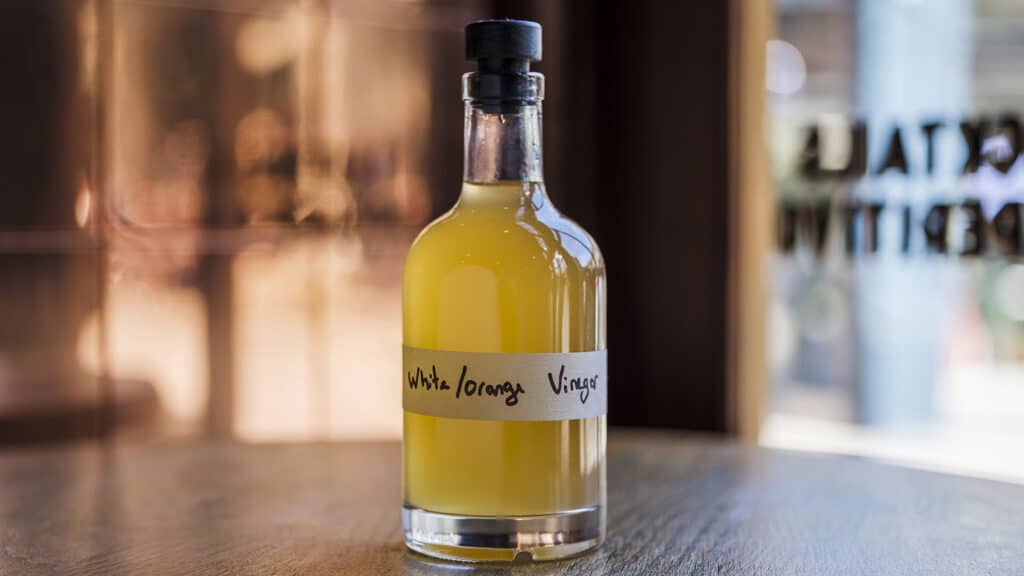

“BOROUGH MARKET’S PRIMARY ROLE IS TO FEED US – BUT IT IS ALSO TO EDUCATE, AND TO SERVE AS A ROLE MODEL”
Stale bread. Soft biscuits. Oxidised wine. Vegetable leaves. ‘Deformed’ fruit. It’s amazing what you can find at Borough Market. You might not know it of course: you might think you’re just buying some chutney for your cheese, a cake for your coffee, or a fruit shrub as a soft aperitif before dining at Elliot’s – and you are. But you’re also helping Borough Market’s increasingly environmentally aware traders reduce their individual and collective food waste.
Some initiatives are Market-wide: Plan Zheroes, which helps food businesses easily and safely donate their surplus food to charities and community groups, collects surplus produce from a wide variety of traders. “I hate food waste,” says Kath Dawson, whose stall Ted’s Veg has been involved with the scheme since its inception. “Why chuck good food away, when it can go to someone in need?” Plan Zheroes works with local homelessness organisations as well as charities that support the elderly and people with mental health or substance abuse issues – for which meals are a core part of their service. Serve someone a hot meal and you can sit down and start talking to them about their issues, providing mental as well as physical nourishment.
Less obvious – to the traders as well as the customers – is Entocycle, though like Plan Zheroes this initiative operates just around the corner. To describe it as an insect farm is to do it something of an injustice, though that is its role in essence. “We have built very specialist, cutting edge technology using computer vision and automation to do the complicated egg production, then we use relatively simple equipment to do the fattening of the insects,” says founder Kieran Olivares-Whitaker.
The insects grow fat on food waste procured from the Market: vegetable leaves, fruit peel, stalks and so on. After 12 days they are dried and turned into protein flour, which is in turn made into animal feed. “Insect protein is a sustainable alternative to soy or fishmeal, which are both having catastrophic effects on biodiversity and the health of our planet,” says Kieran. The fact this protein helps to mitigate another of our biggest environmental issues, food waste, is an added bonus. The hope for the Market, and for Entocycle, is that their partnership grows more and more fruitful. “You guys produce food waste; we recycle food waste. We’re 150 metres away. It’s an ideal partnership,” Kieran continues. “We hope it will be a stepping stone to bigger things.”
Plan Zheroes and Entocycle are big-picture projects; pioneering initiatives with the potential to change lives on a large scale. So too is Biobean, which collects old grounds from the Market’s coffee traders and transforms them into ‘coffee logs’: briquettes for wood burners and open fires. But the journey to zero waste can start with a single banana loaf and the efforts individual traders are making to repurpose their surplus should not go overlooked.
Ask for a soft drink in Elliot’s and you’ll be offered not a cola or a lemonade, but a shrub: a soft drink brewed with surplus fruit and wine-turned-vinegar (pictured top). “Any wine we have left over that can’t be served is oxidised and turned into drinking vinegar, and we use seasonal produce from the Market to infuse it. We have no other soft drinks or mixers, which also reduces our waste,” explains general manager Candice. They love pickles and ferments – as does Turnips, one of the Market’s greengrocers, for which waste reduction has become a core part of the business: what Turnips has dubbed a “two seasons” mentality on the stall. “Especially when we’re coming to the end of a season, when we get a big pile of, say, plums or peaches,” Gino at the stall tells me. “We can’t sell them all fresh in time, so we take some into the kitchen and turn them into ferments or sauces.”
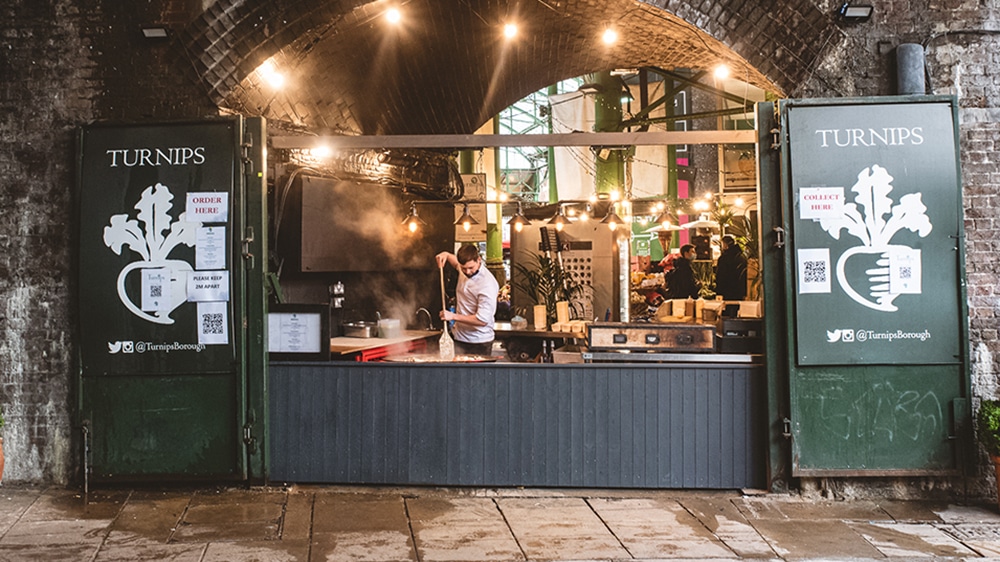
Turnips started out making smoothies, pizzas and mushroom risotto to use up produce that “doesn’t look as nice or that’s gone slightly past its best – that’s still good to eat, but we can’t sell on the stall or to restaurants,” Gino continues. Mushrooms are cooked slowly in a large pan before being added to spelt risotto. Any left at the end of the day are made into a duxelle paste and used on their sourdough pizzas, which are also a vehicle for less-than-perfect tomatoes, onions and other seasonal veg. “By chopping up the tomatoes and dehydrating them for pizza bases, they can last at least an extra week,” Gino observes. The stall’s juices do the same for any fruit that’s too ripe to sell.
Of course, it’s not just fruit and vegetables that have the potential to be wasted. According to the food waste app Too Good to Go – an app that helps businesses sell food that’s ‘too good to go’ to customers at a reduced rate – bread is one of the most wasted foods in the country. Each year we throw away 900,000 tonnes of bread – the equivalent of 24 million slices every day. Borough Market bakers Bread Ahead and Karaway Bakery have set their hearts and hands on reducing this, by both offering their wares via the app and otherwise transforming leftovers into higher value items such as bread pudding for Bread Ahead, and rye fries in the case of Karaway: a crunchy, salty, garlicky fried snack that simply cries out for a cold beer or glass of bubbly.
“Rye fries are a traditional snack in Lithuania, where we have them with drinks and often on picnics,” says Doma of Karaway Bakery. By frying their leftover rye bread and selling it, their hope is not just to reduce their bread waste but encourage us to do likewise. “We hope to show our customers that they too can easily make use of bread that has gone stale.”
Borough Market’s primary role is to feed us – but it is also to educate, and to serve as a role model. It’s testament to how seriously its traders take this responsibility that so many have reduced their own food waste through initiatives that I, for one, will be trying at home.
Blessed are the cheesemakers: Boulette d’Avesnes
Clare Finney tells the story behind a devilishly strong, vibrant cheese from Une Normande a Londres
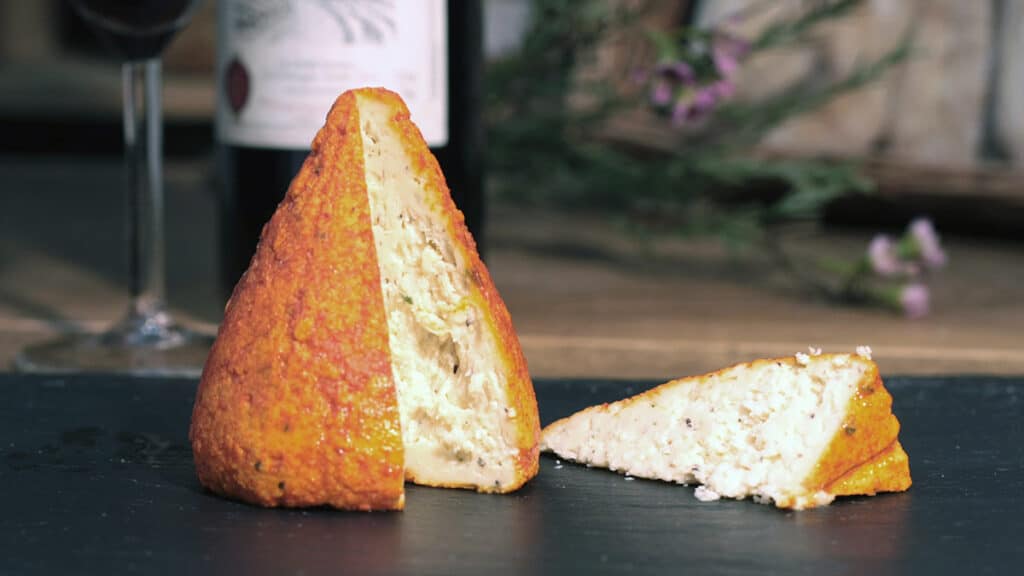

“KNOWN AS THE ‘DEVIL’S SUPPOSITORY’, BOULETTE D’AVESNES HAS BEEN AROUND SINCE THE 15TH CENTURY”
Words: Clare Finney
“You can taste it for days,” warns Matthew of Une Normande de Londres, looking fearfully at the fiery orange ovoid in front of us. We can believe it: the cover has only been off two minutes and already we can smell it: musk, spicy heat, a not unpleasant dampness, and herbs.
It looks like hell; and from the sound of it, tastes not dissimilar. In a good way. Known as the “devil’s suppository”, Boulette d’Avesnes has been around since the 15th century – and the taste, if you don’t eat it while it’s young, will linger for almost as many years again.
This is cheese curds that have been crushed, rolled in parsley, pepper and tarragon, shaped by hand and rubbed with paprika – hence its vibrant volcanic shade. During the course of its three-month maturation in a damp cellar (itself probably unchanged in six centuries) the rind is weekly washed in lashings of beer.
It’s made of bits of under-ripe or less-than-perfect maroilles cheese – for which the region, Nord-Pas-de-Calais, is famous – which itself developed as a way of using up leftovers from making butter. Though by no means a mild cheese to start with, the supposed ‘fact’ that maroillles was created by a monk in the 10th century shows how far, with the addition of a bit of beer and paprika, a cheese can come.
The miners who once populated this region and whose legacy can be seen in the now grassy mounds which litter the otherwise flat landscape, loved this weirdly beautiful suppository. “They would impale it above their windows to dry it out”, making it even stronger. It’s the thought of this that prompts his warning about its aftertaste.
“When it’s young it is delicious – perfect with just some bread and white beer – but old it is very, very strong, and sharp,” he crinkles his nose. It loses its complexity: there’s a lot going on in this small, fierce dome, from herbs to spices to the inimitable flavour of a fine, artisanal cheese, and it loses some of its texture, which should be creamy teetering on the edge of crumbly, dense and firm.
We do as Matthew suggests, and tentatively tuck in to the cheese with a baguette from Olivier’s Bakery. In the other hand we clasp a glass of cold beer to steady ourselves and quench the thirst.
The impact is intense: like retreating to a sauna from a chilly outdoors. Spicy, smoky, deep, yet enriched by herbs, this is the cheese answer to Marmite, were Marmite laced with paprika; and a powerful reminder of just how narrow, when it comes to taste, the line is between heaven and hell – the Boulette d’Avesnes is definitely the former.
Currant affairs
Sybil Kapoor explores the many joys of the glorious summer explosion of British berries and currants


“WE ARE FOCUSED ON GIVING PEOPLE THE ABILITY TO BE SELF-DEPENDENT, NOT RELIANT ON HAND OUTS OR DONATIONS”
Words: Clare Finney
The numbers are staggering: 320,000 recorded homeless. More than 4,000 people sleeping rough each night. But you don’t need statistics, if you live in London, to see that rough sleeping has doubled since 2010. You just need to walk five minutes down a busy street.
To say this is unacceptable is a gross understatement. It is an outrage – one which, in 2015, Cemal Ezel decided he could no longer ignore. He set up Old Spike Roastery in Peckham and, some months later, Change Please: bright, brilliantly coloured mobile coffee carts staffed by homeless people-turned-baristas. He provided training, therapy, financial advice and a step onto the rental market. Most importantly of all, he provided what he calls ‘patient employment’: a job in which those who had spent months, perhaps years on the streets, often as a result of great trauma, could build their confidence, make mistakes, and learn.
“I think the main thing for us is that we offer a ‘job-first’ model. It is purely focused on giving people the ability to be self-dependent, as opposed to reliant on hand outs or donations.” One of the most important aspects of this is the living wage: “If you can pay the living wage of the city – so in London, that’s the London living wage – that person can rent, eat and determine their own future.” The old adage “teach a man to fish” could be described as Cemal’s founding principle: “With £3,000 we could afford to give 300 people sleeping bags. The same amount of money will help less people with our initiative, but the impact will be far bigger.”
The goal, he says, is to enable them to seek employment elsewhere, “so they are no longer dependent on us,” he explains. Some of their staff go on to be baristas or roasters – but they also have alumni working in graphic design or marketing. “We try to understand what their hopes are, recognise what their talents are, and work with them,” says Cemal. One man might struggle with brew times, but produce a beautiful blackboard. “We have had some great artists. We’ve had people go on to set up their own coffee carts,” says Cemal proudly. Their current head roaster, Sebastian, was formerly homeless, and is now responsible for training, roasting and quality assurance of the beans.
Change Please breaks the cycle of poverty not just by giving its employees money and shelter but by giving them a life; a helping hand “out of poverty and into society”. They have to work for it, Cemal continues: “Our criteria aren’t hard and fast, but we do need people to be in the right head space for employment, who want to help themselves. People who are looking to receive money from the council will be begrudging about working,” he says – but their lives will be changed from the moment they are accepted onto the scheme.

Change Please pays a deposit on housing – a deposit being one of the key barriers to the homeless getting back onto the rental ladder in the first place. They underwrite the rent and spend the next six months paying it direct to the landlord by deducting it from their employee’s pay. They then transfer responsibility for rent payments to the tenant, and within another six months he or she has a reference and credit history: the golden ticket to loans, jobs, future rental and phone contracts, and all the other qualifications demanded by the 21st century. Equipped for the outside world, they are encouraged to apply for other employment, beyond Change Please. The cycle is broken, and the work of Change Please is complete.
The potential of Change Please is enormous: the average Londoner drinks two cups of coffee every single day. Yet Change Please is powerless without clients, customers and partners like Borough Market, who champion not just the social aspect of the business, but the quality of their coffee. “Being somewhere like Borough Market is so important, because it’s all about quality and provenance here. You can’t sell here without a minimum standard.”
Customers care about the homeless and social enterprise, of course, but when you’re downing two coffees a day, quality and pricing will always be your priority. “The biggest problem we have is customers assuming the quality of our coffee is compromised because it’s a social enterprise. There’s a deep suspicion of social ventures.” They could not be further from the truth, Cemal argues, pointing to their numerous contracts and awards, granted purely on the basis of quality. “We are actually overcompensating because of this stigma, ensuring our branding focuses less on the social side, and more on the quality of the product we are trying to sell” – that is, single-estate, directly traded coffee, hand roasted by beneficiaries who are trained and mentored day-to-day by fully qualified coffee industry professionals.
We don’t need to taste the coffee at Change Please to know it’s a good one. We can sense it: the aroma, the sound of laughter and the warm feeling of hope which emanates from the stall.
